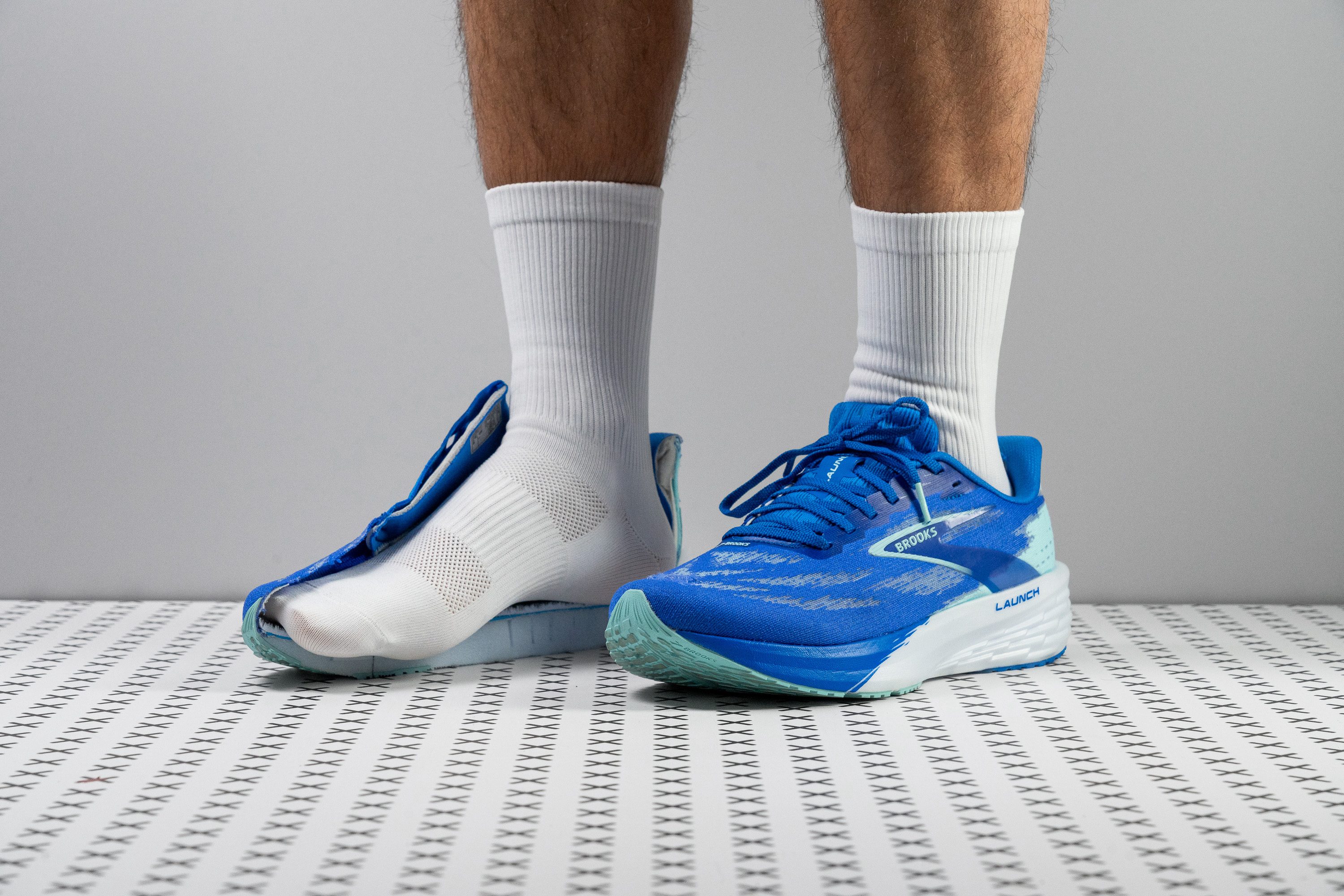Our verdict
- Top pick in best running shoes for Achilles tendonitis
- Top pick in best tempo shoes
Pros
- Revamped nitrogen-injected midsole
- Great upper breathability
- Still fairly priced
- Snug and secure fit
- Improved for heel strikers
- Agile and nimble ride
- Works for daily miles and speed workouts
- Improved stability
Cons
- Price increase from v10
- Low-volume toebox
- Firm ride
- Minor weight gain
Audience verdict
- Top 29% most popular running shoes
Comparison
The most similar running shoes compared
+ + Add a shoe | |||||
|---|---|---|---|---|---|
| Audience score | 84 Good! | 91 Superb! | 83 Good! | 88 Great! | |
| Price | $120 | $140 | $100 | $140 | |
| Pace | Daily runningTempo | Daily running | Daily running | CompetitionTempo | |
| Arch support | Neutral | Neutral | Neutral | Neutral | |
| Weight lab Weight brand | 8.4 oz / 237g 7.7 oz / 218g | 9.1 oz / 257g 9.4 oz / 266g | 9.1 oz / 258g 9.1 oz / 258g | 7.2 oz / 203g 7.1 oz / 201g | |
| Lightweight | ✓ | ✗ | ✗ | ✓ | |
| Drop lab Drop brand | 9.5 mm 8.0 mm | 9.5 mm 10.0 mm | 9.8 mm 10.0 mm | 9.8 mm 8.0 mm | |
| Strike pattern | HeelMid/forefoot | HeelMid/forefoot | HeelMid/forefoot | HeelMid/forefoot | |
| Size | True to size | True to size | True to size | True to size | |
| Midsole softness | Balanced | Balanced | Soft | Balanced | |
| Difference in midsole softness in cold | Small | Small | Normal | Small | |
| Toebox durability | Decent | Decent | Good | Decent | |
| Heel padding durability | Bad | Good | Decent | Bad | |
| Outsole durability | Good | Decent | Good | Decent | |
| Breathability | Moderate | Moderate | Breathable | Breathable | |
| Width / fit | Medium | Wide | Medium | Medium | |
| Toebox width | Medium | Wide | Medium | Medium | |
| Stiffness | Moderate | Flexible | Moderate | Moderate | |
| Torsional rigidity | Stiff | Moderate | Stiff | Moderate | |
| Heel counter stiffness | Stiff | Stiff | Stiff | Moderate | |
| Heel lab Heel brand | 33.5 mm 35.5 mm | 33.5 mm 33.0 mm | 32.0 mm | 32.2 mm 31.5 mm | |
| Forefoot lab Forefoot brand | 24.0 mm 27.5 mm | 24.0 mm 23.0 mm | 22.2 mm | 22.4 mm 23.5 mm | |
| Widths available | NormalWide | NormalWide | Normal | Normal | |
| Orthotic friendly | ✓ | ✓ | ✓ | ✓ | |
| Season | All seasons | All seasons | SummerAll seasons | SummerAll seasons | |
| Removable insole | ✓ | ✓ | ✓ | ✓ | |
| Ranking | #239 Bottom 35% | #30 Top 9% | #254 Bottom 30% | #126 Top 35% | |
| Popularity | #106 Top 29% | #67 Top 19% | #65 Top 18% | #116 Top 32% |
Who should buy
After testing the Brooks Launch 11 in the lab, we believe that:
- It’s a great match for runners looking for an affordable, versatile, and feather-light daily trainer with no unnecessary bulk.
- It will likely appeal to those who dislike oversized or clunky running shoes, as this model sticks to a more traditional-feeling design.
- Runners familiar with the previous Launch may notice a few drawbacks, but in our view, the revamped midsole make it a worthwhile trade-off.
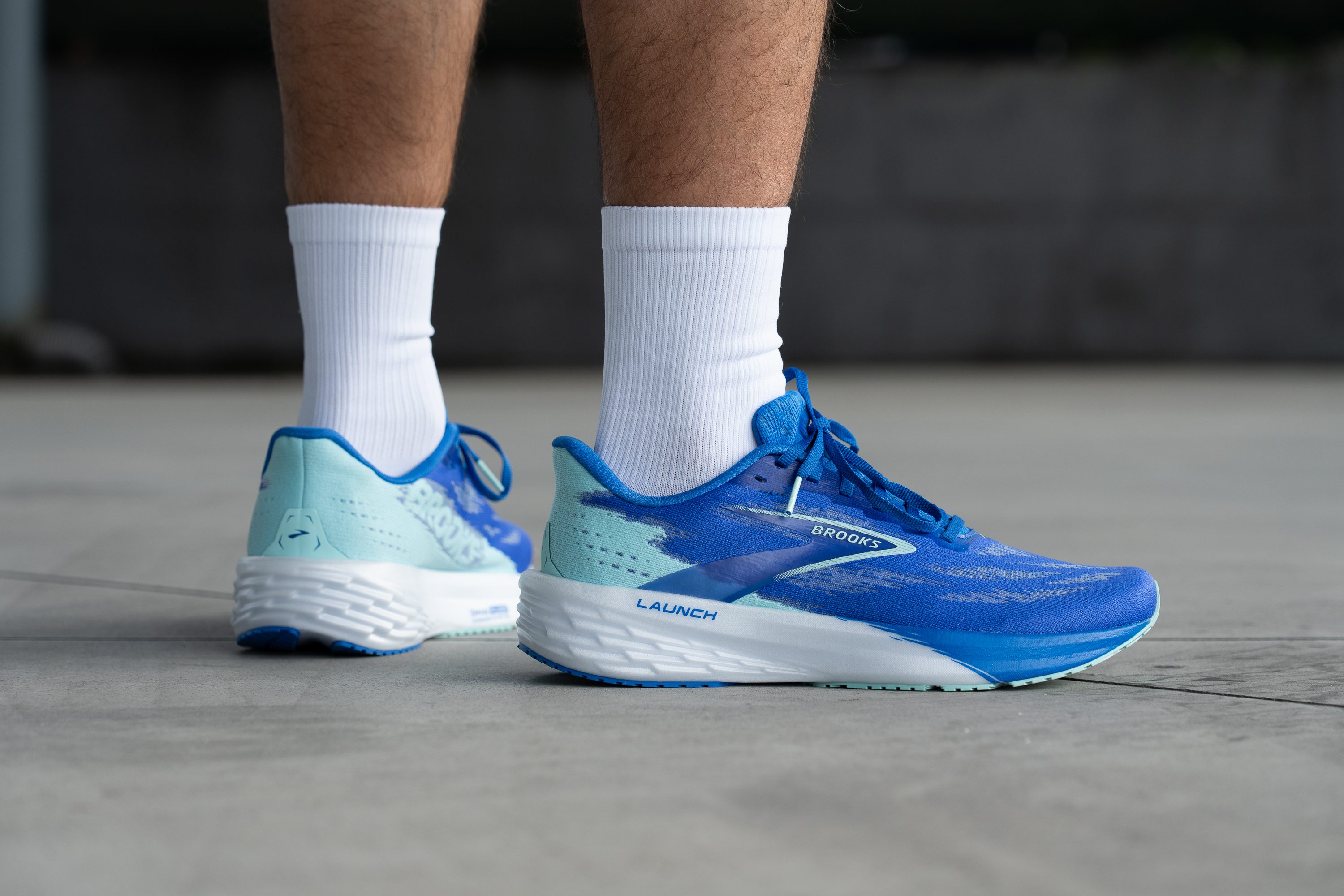
Who should NOT buy
We think the Launch 11 isn't the best option for runners with wide feet. Its toebox feels tight, especially during longer sessions. From our point of view, better picks would be the ASICS Noosa Tri 16 or the Adidas Adizero EVO SL—both offer a roomier fit with the same daily-and-speed hybrid approach.
Our assessment is that the Launch 11’s price increase will also turn away some runners. While we did notice solid upgrades, price really matters at this tier. For those that want to spend a bit less, we suggest the Nike Winflo 11 or the New Balance Fresh Foam 680 v8.
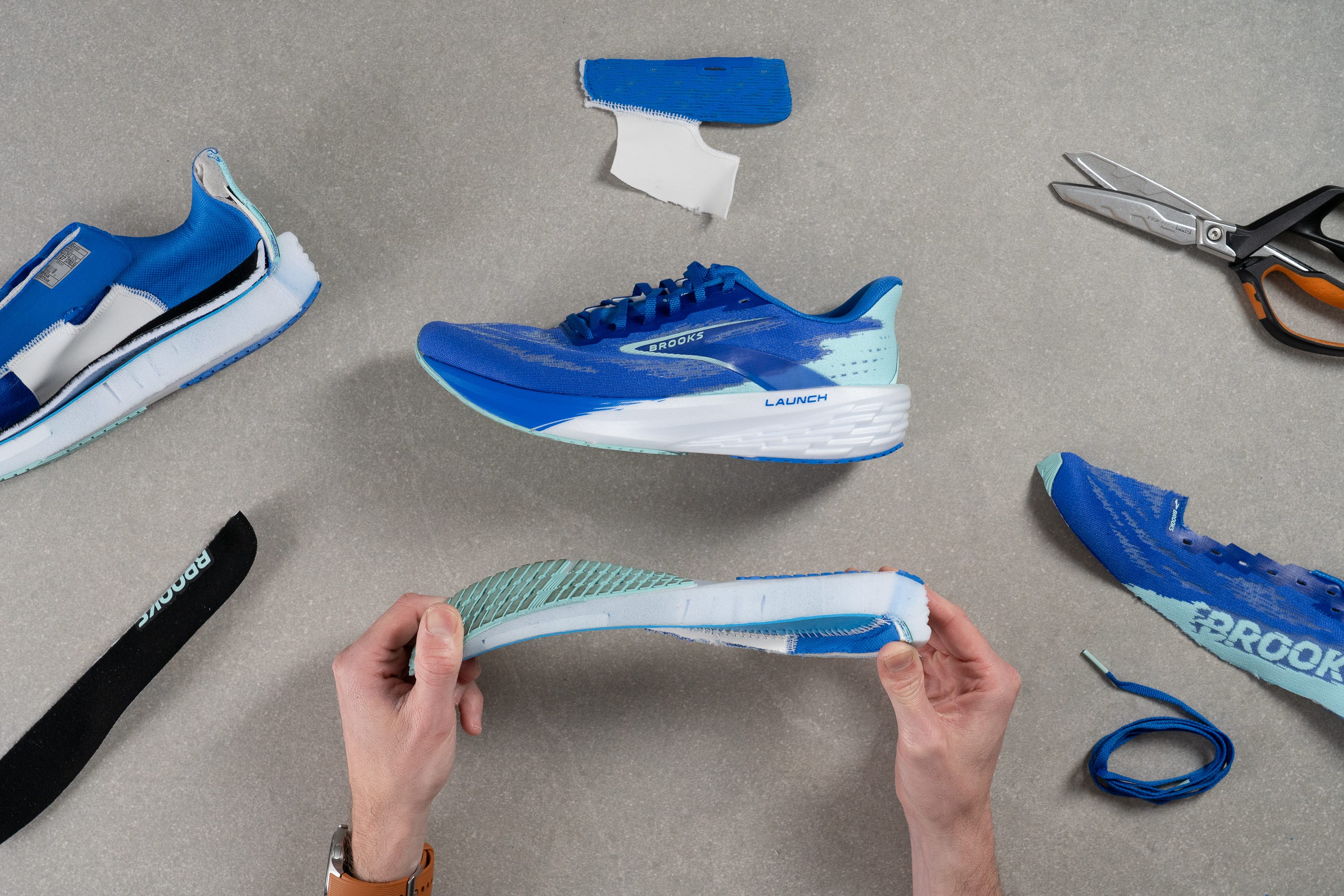
Cushioning
Shock absorption
The Launch 11 reflects the ongoing changes in the running shoe world with a bulkier look, which translates to better shock absorption.
We found 129 SA in the heel and 103 SA in the forefoot, making it a great daily trainer for runners who want solid protection without stepping into the premium price range.
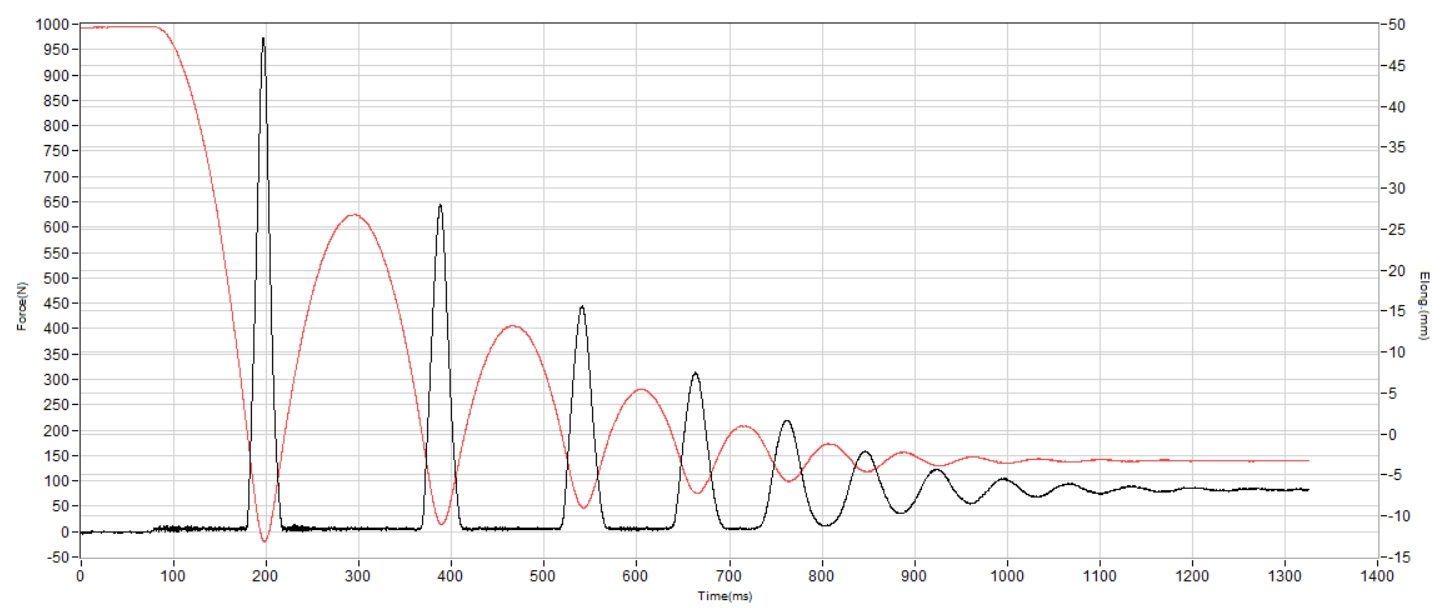
| Launch 11 | 129 SA |
| Average | 129 SA |
Energy return
Energy return saw a solid boost from version 10, making the slight price increase easier to justify for many runners. It now delivers 55.0% in the heel and 66.0% in the forefoot, good figures that edge closer to higher-priced competitors.
| Launch 11 | 55.0% |
| Average | 58.6% |
Heel stack
We love that Brooks kept the Launch 11 so close to the previous version. At 33.5 mm, it actually drops slightly from the 33.8 mm we measured last year.
From our perspective, the Launch hits again a sweet spot. It’s nicely cushioned for everyday miles, yet doesn’t cross into tall-shoe territory. Basically, this average stack height is what keeps the Launch feeling so nimble underfoot for one more year!
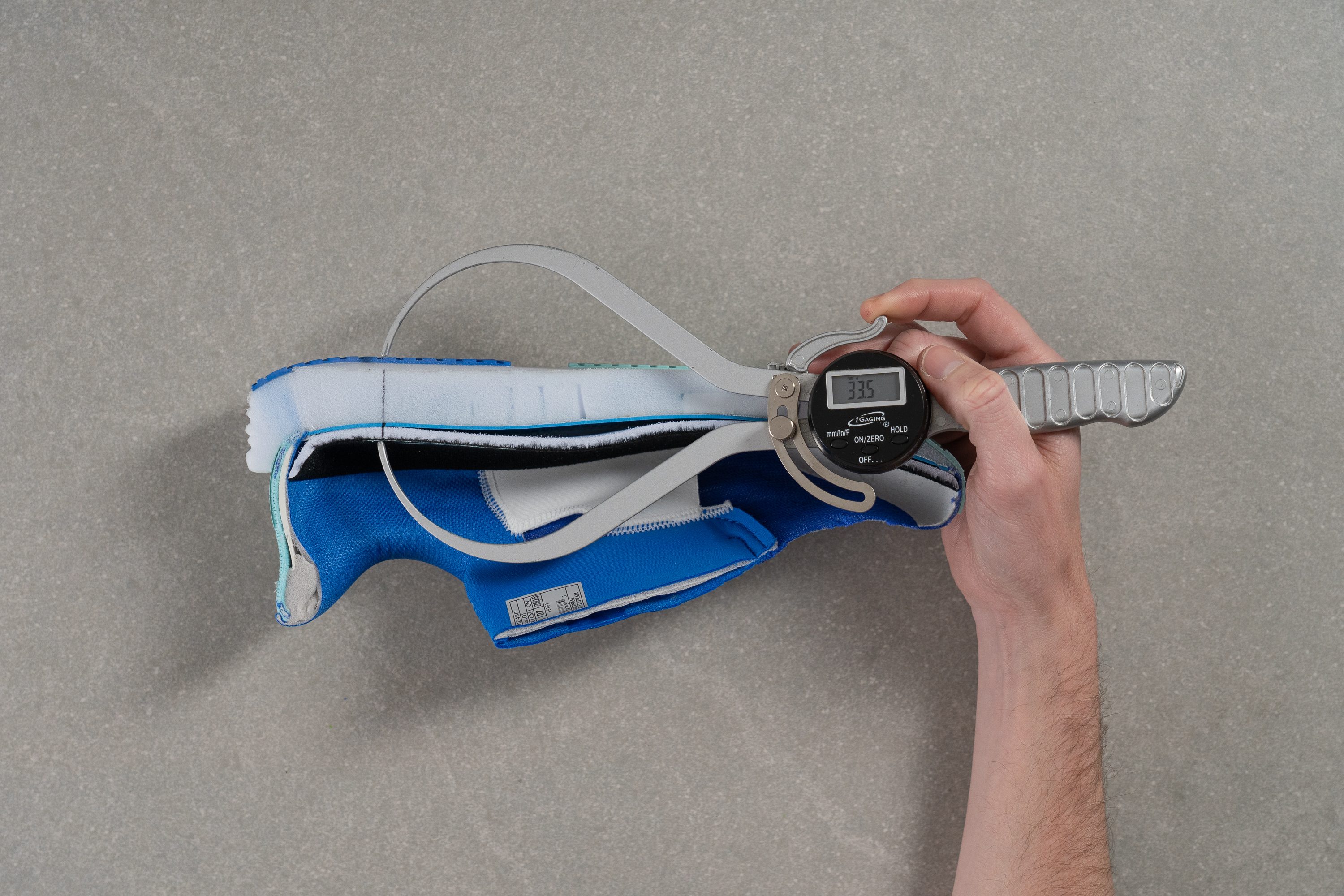
| Launch 11 | 33.5 mm |
| Average | 34.8 mm |
Forefoot stack
The forefoot measured 24.0 mm—close to the average. While this might not suit heavyweight forefoot strikers, we think that average runners will find more than enough cushioning for daily runs.
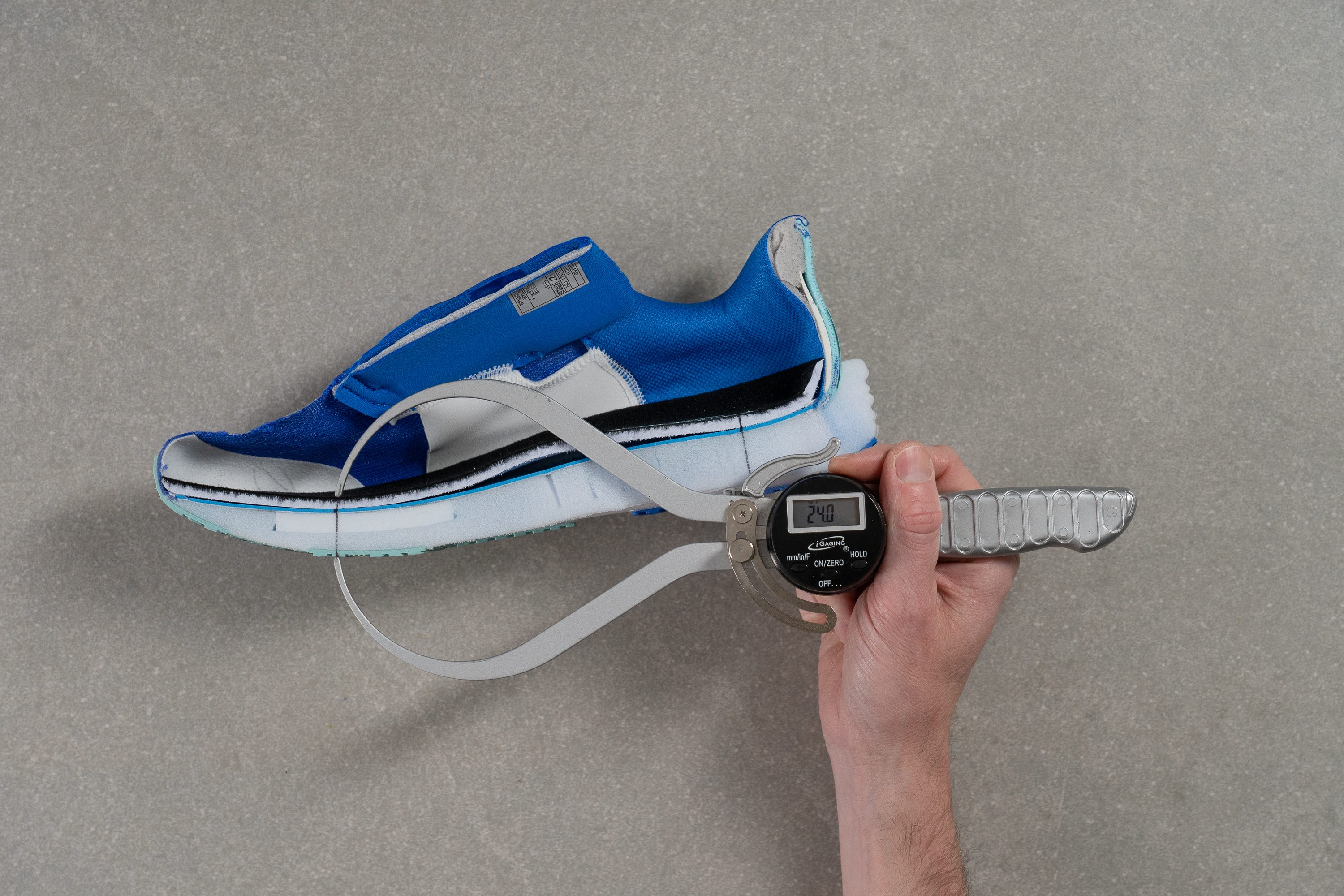
| Launch 11 | 24.0 mm |
| Average | 26.1 mm |
Drop
Brooks lists an 8 mm drop for the Launch 11, but we measured 9.5 mm in the lab. For us, it feels slightly steeper underfoot than Brooks' number, and in our view, it's a better match for heel strikers than others.
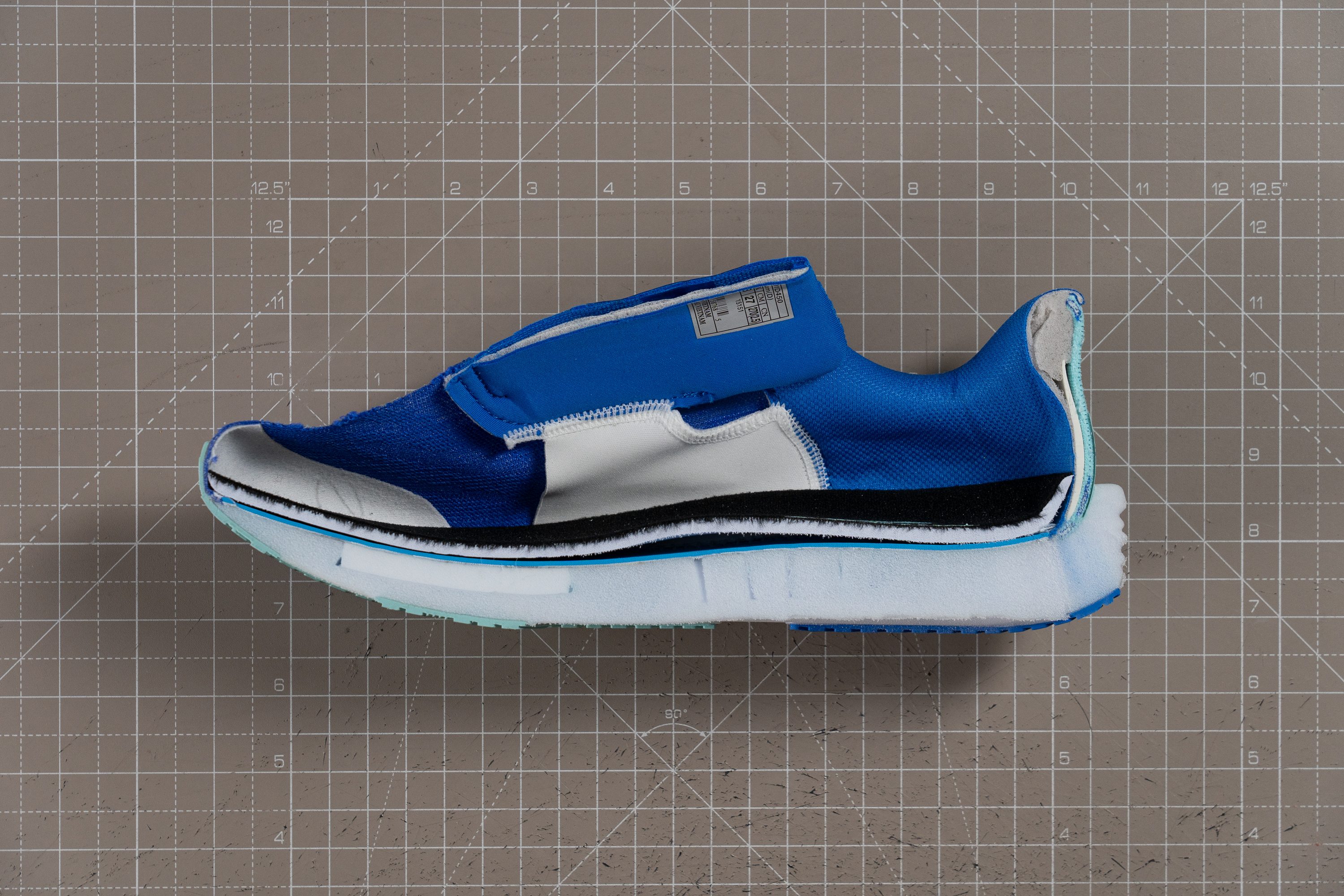
| Launch 11 | 9.5 mm |
| Average | 8.6 mm |
Midsole softness
The midsole brings one of the most standout updates this year—enough for longtime Launch fans to consider the upgrade despite the price hike. We’re talking about a complete revamp that changes the ride more than any previous version.
Brooks swapped out the average EVA for nitrogen-injected DNA Flash foam, and we’re convinced this is a huge leap forward. Energy return feels noticeably improved, and while it still doesn’t reach premium-foam levels, we didn’t expect Pebax for this price.
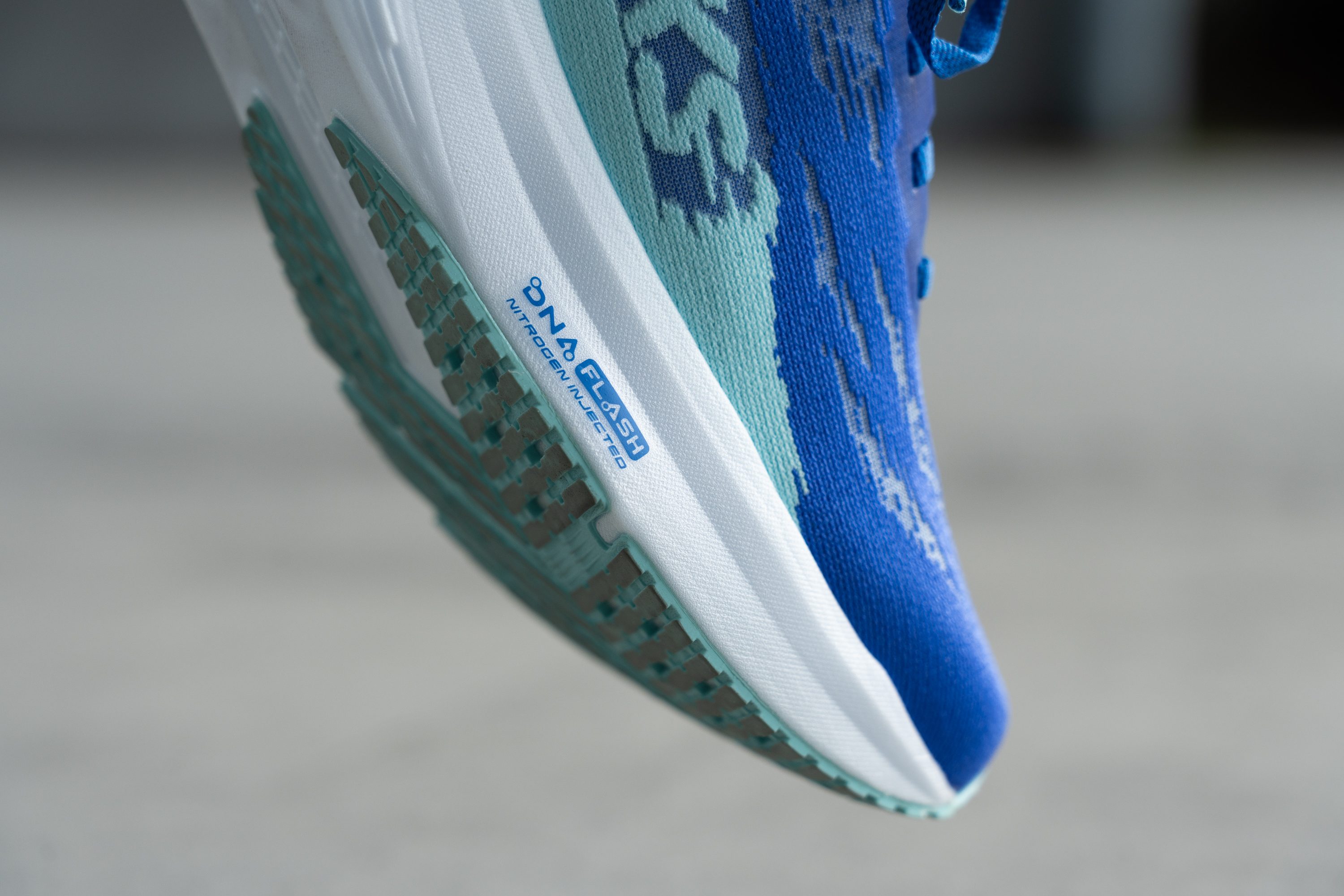
Based on our testing, the ride leans toward firm. Our durometer measured 24.1 HA, confirming a speed-friendly setup with a quick, spring-loaded bounce.
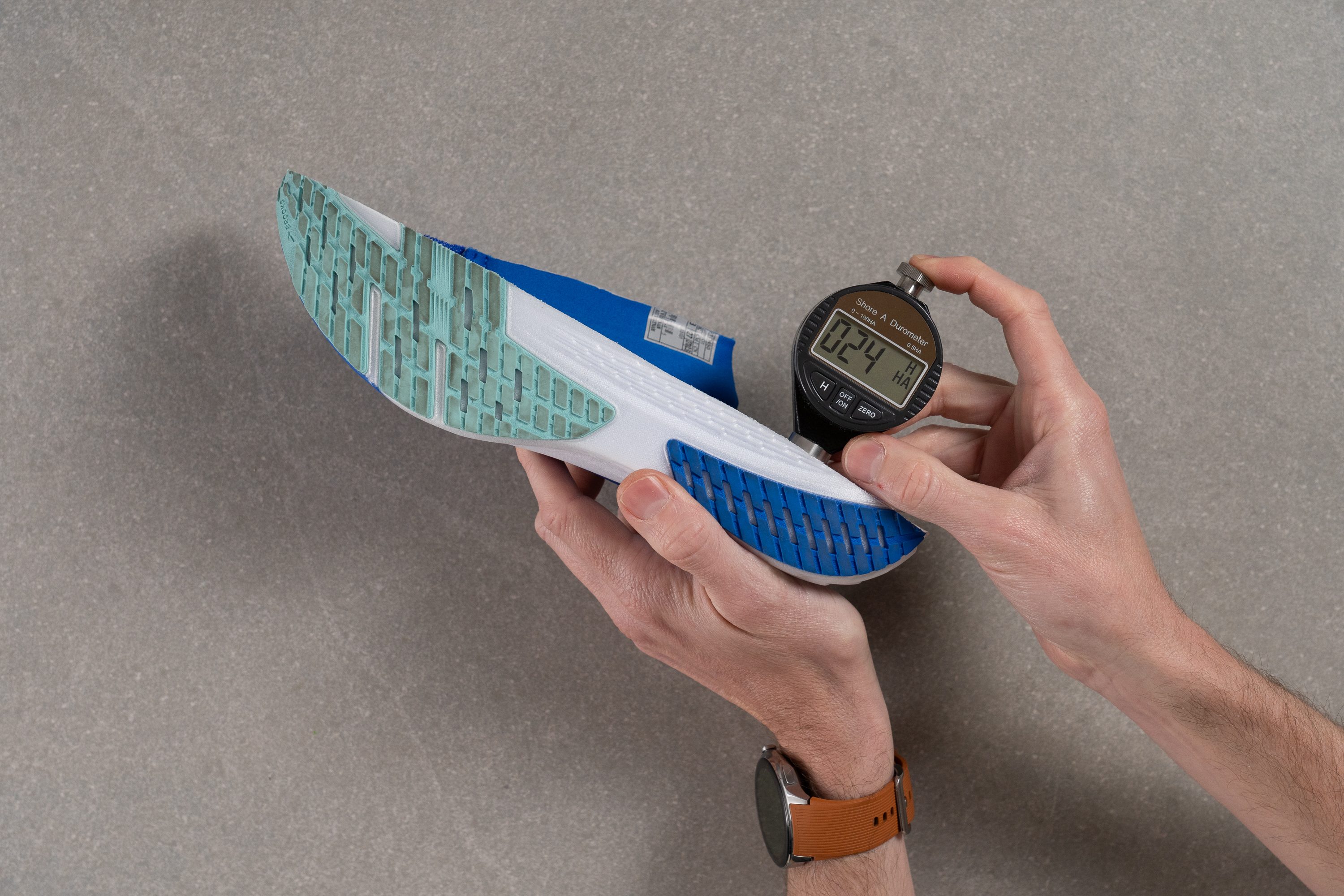
| Launch 11 | 24.1 HA |
| Average | 20.4 HA |
Secondary foam softness
What makes this update stand out is its foam layout—it doesn’t feature a full-length DNA Flash setup. Instead, we discovered that Brooks placed a core of bouncier DNA Flash v2 in the forefoot.
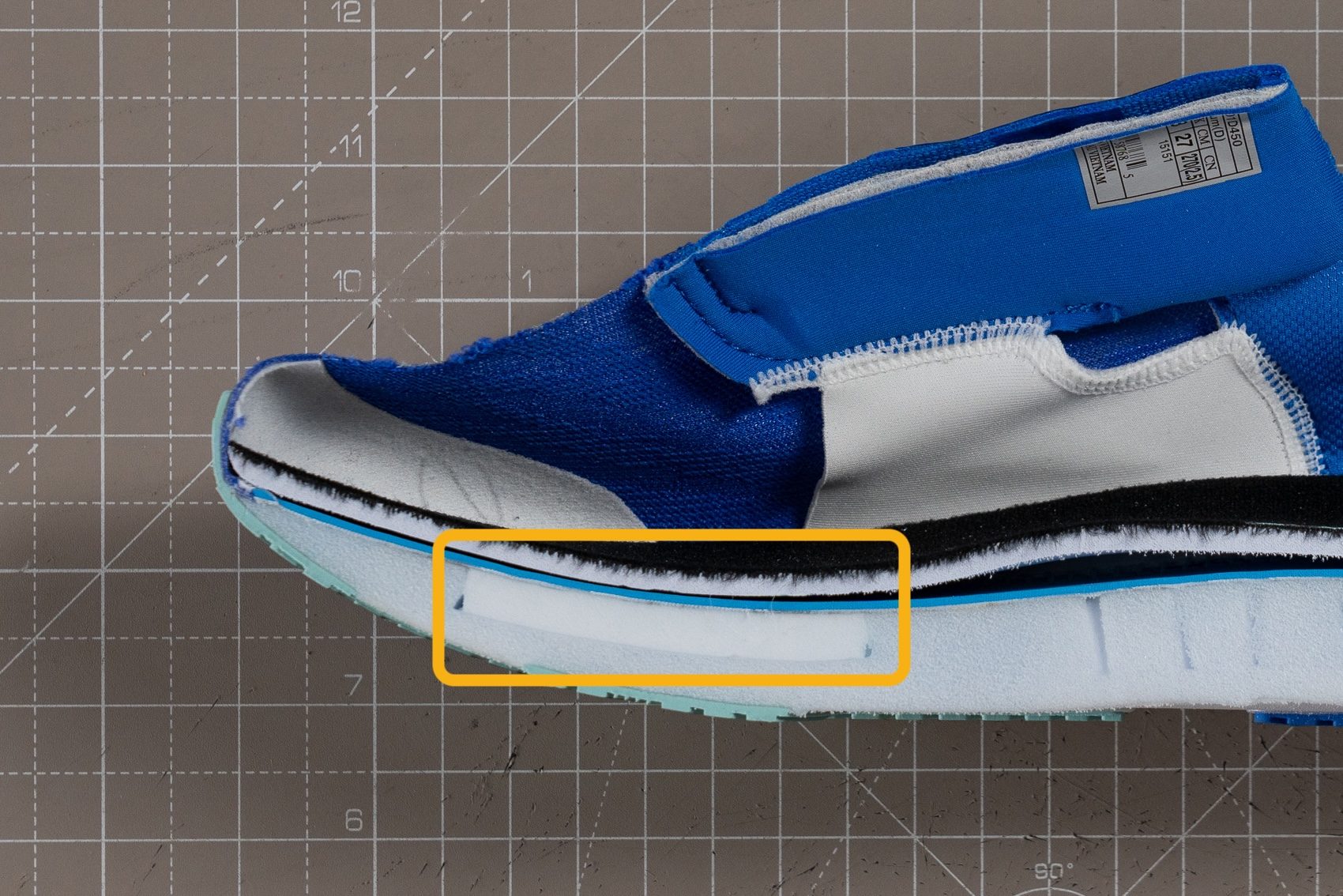
This design reminded us of other tempo shoes we tested, like the Magic Speed 4, where ASICS used a similar foam insert to improve toe-off.
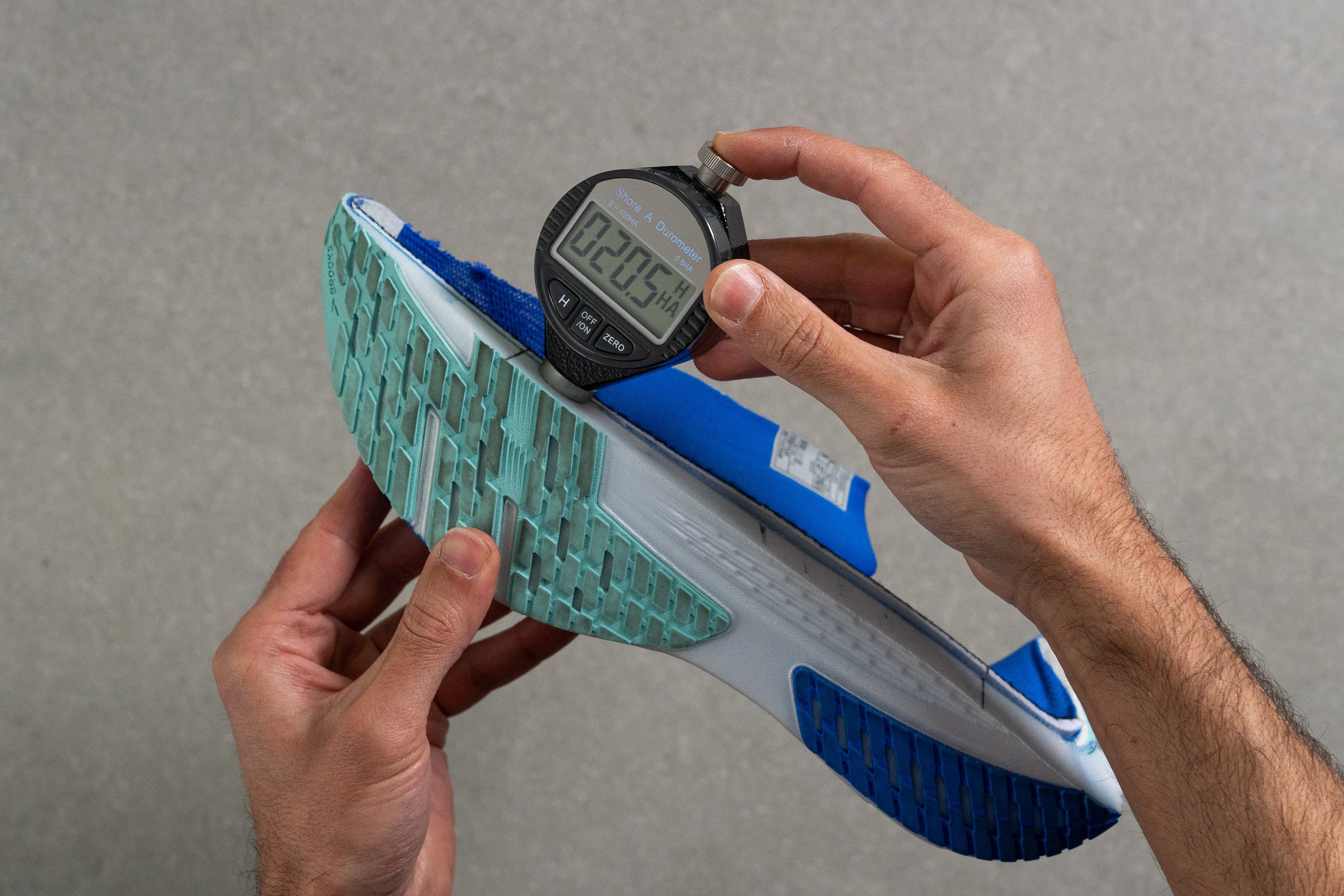
| Launch 11 | 20.5 HA |
| Average | 22.6 HA |
Rocker
We love that the Launch 11 avoids the maximalist trend and stays true to its roots. It also skips the ultra-rockered design for a more natural profile that lets your feet work actively.
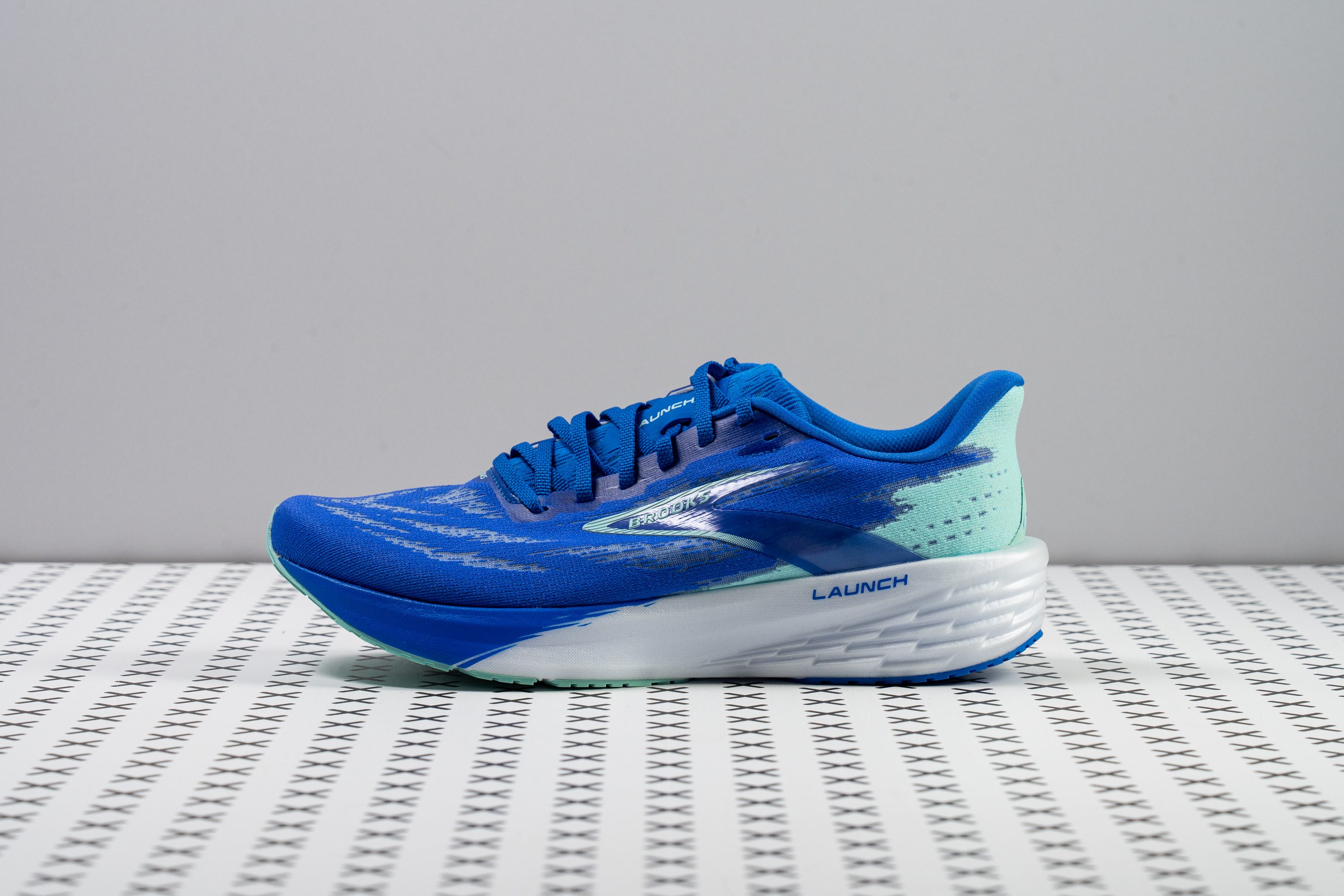
The heel adds a subtle curve. We think this design makes total sense, especially since the shoe targets beginner runners and heel strikers.
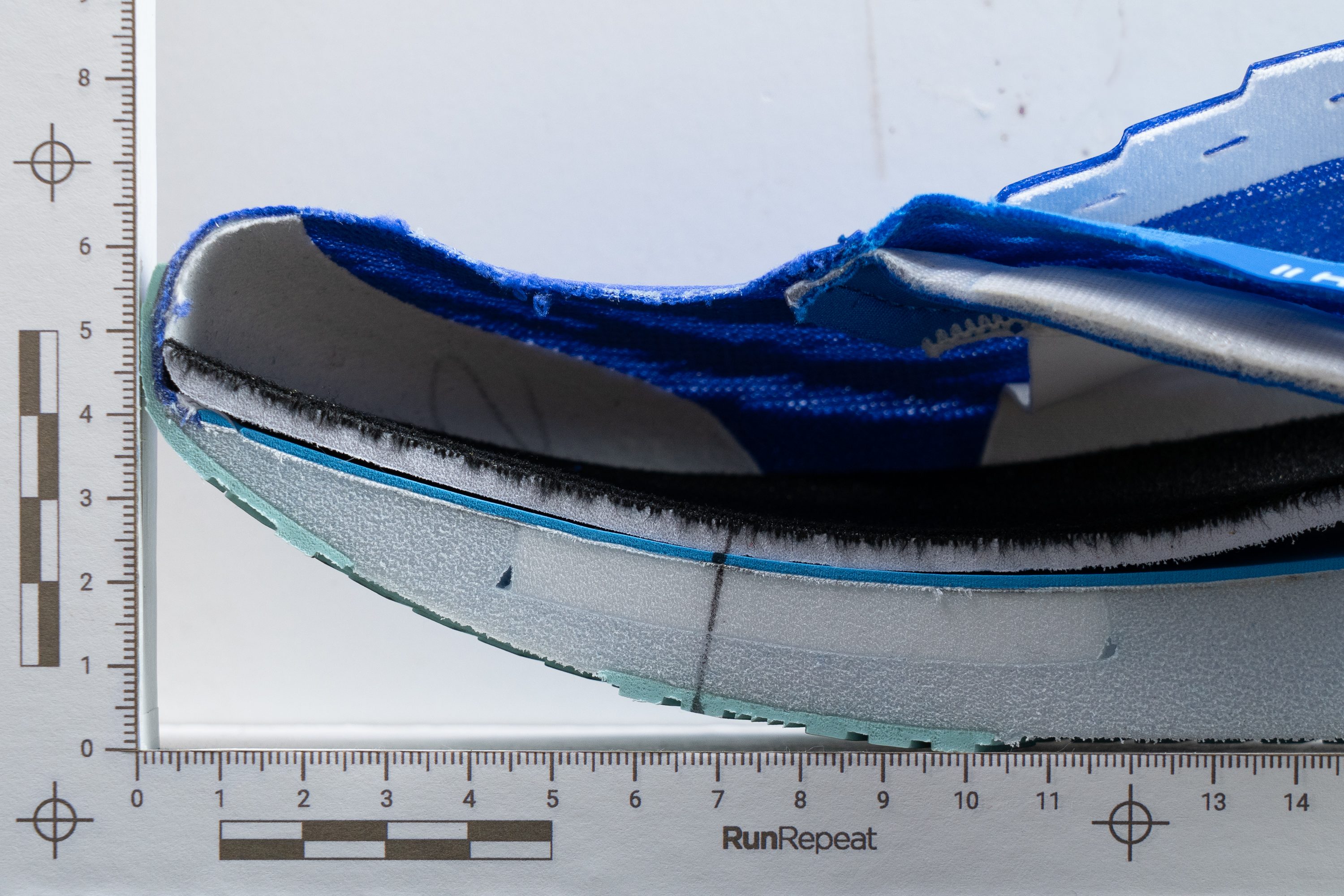
Size and fit
Size
Brooks Launch 11 fits true to size (28 votes).
Width / Fit
The Launch works for daily miles, but it's also built with fast-and-focused tempo runs in mind—and that often leads to a tighter fit. To find out, we crafted a 1:1 gel mold of the shoe's interiors.
After letting it firm up in the freezer for 2 hours, we discovered the fit matched our test runs. At 93.2 mm, it’s definitely a bit narrower than average.
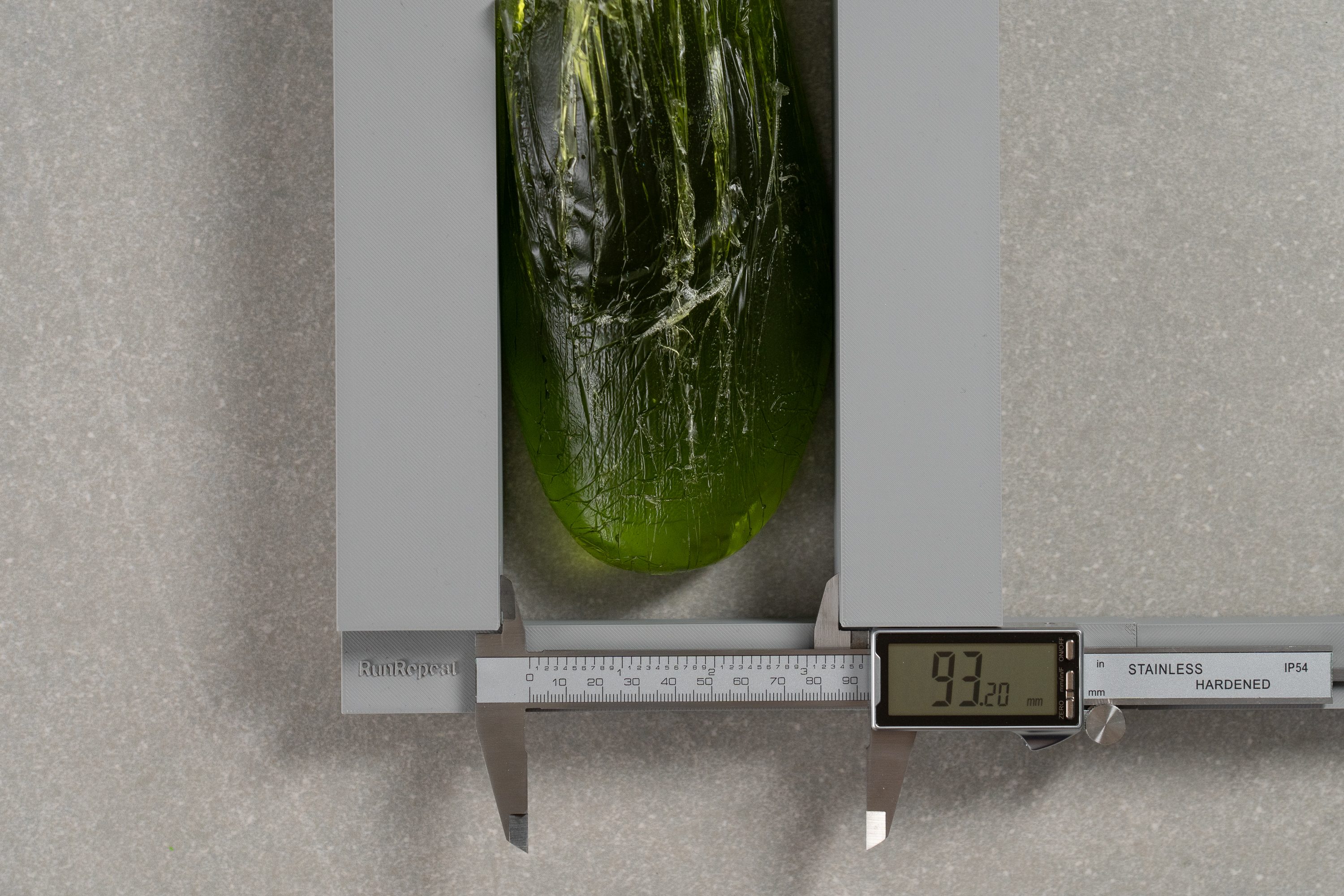
| Launch 11 | 93.2 mm |
| Average | 95.1 mm |
Toebox width
The toebox measures 73.2 mm, landing right in the average range and offering a familiar, no-surprises fit—not spacious, but enough for most runners. On top of that, Brooks offers this shoe in Wide size in select markets.
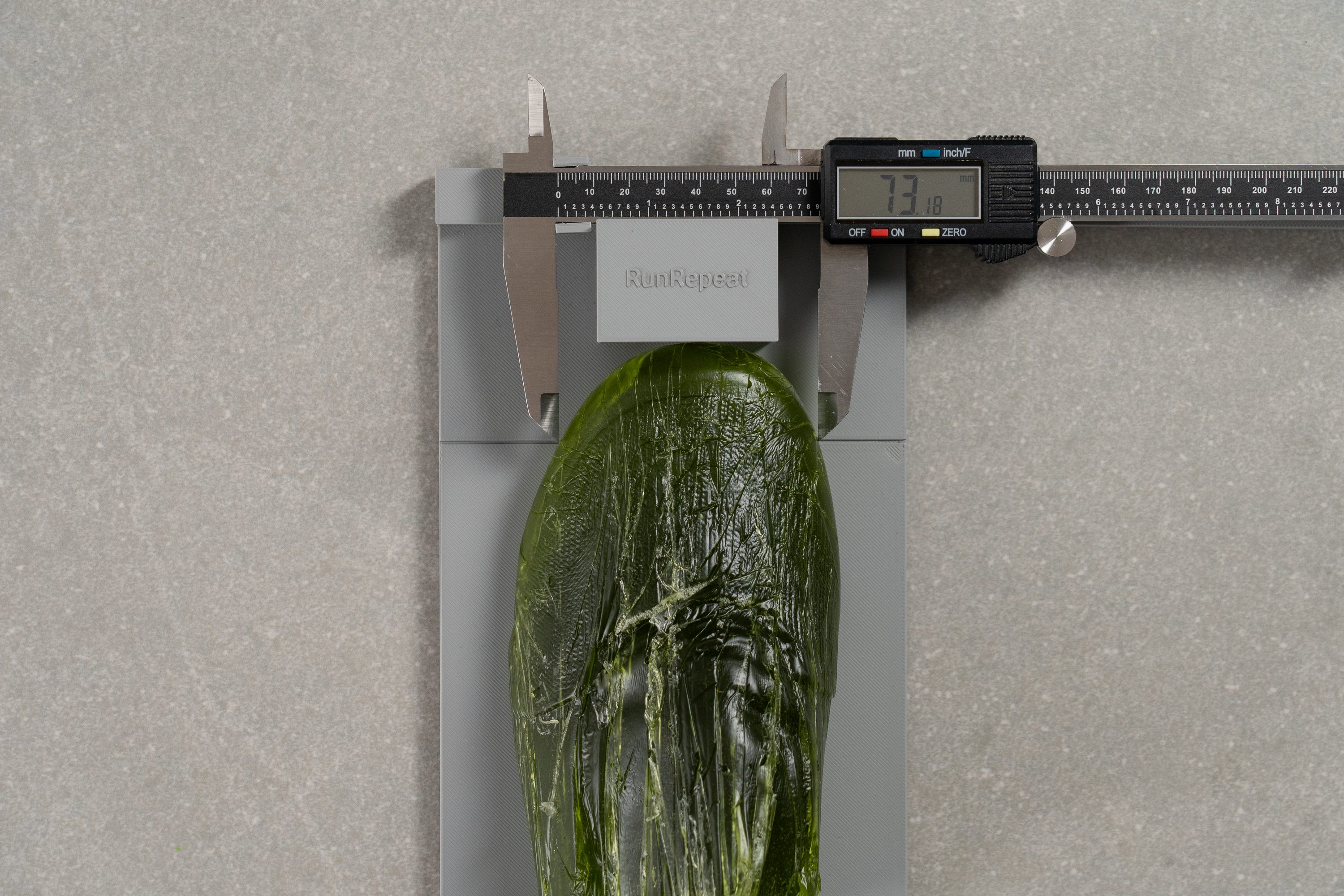
| Launch 11 | 73.2 mm |
| Average | 73.3 mm |
Toebox height
The snug-ish fit continues with the vertical clearance for your feet.
We measured just 25.5 mm here, which might feel slightly restrictive for some—but honestly, it makes sense for a shoe that can be used for speed-focused efforts.
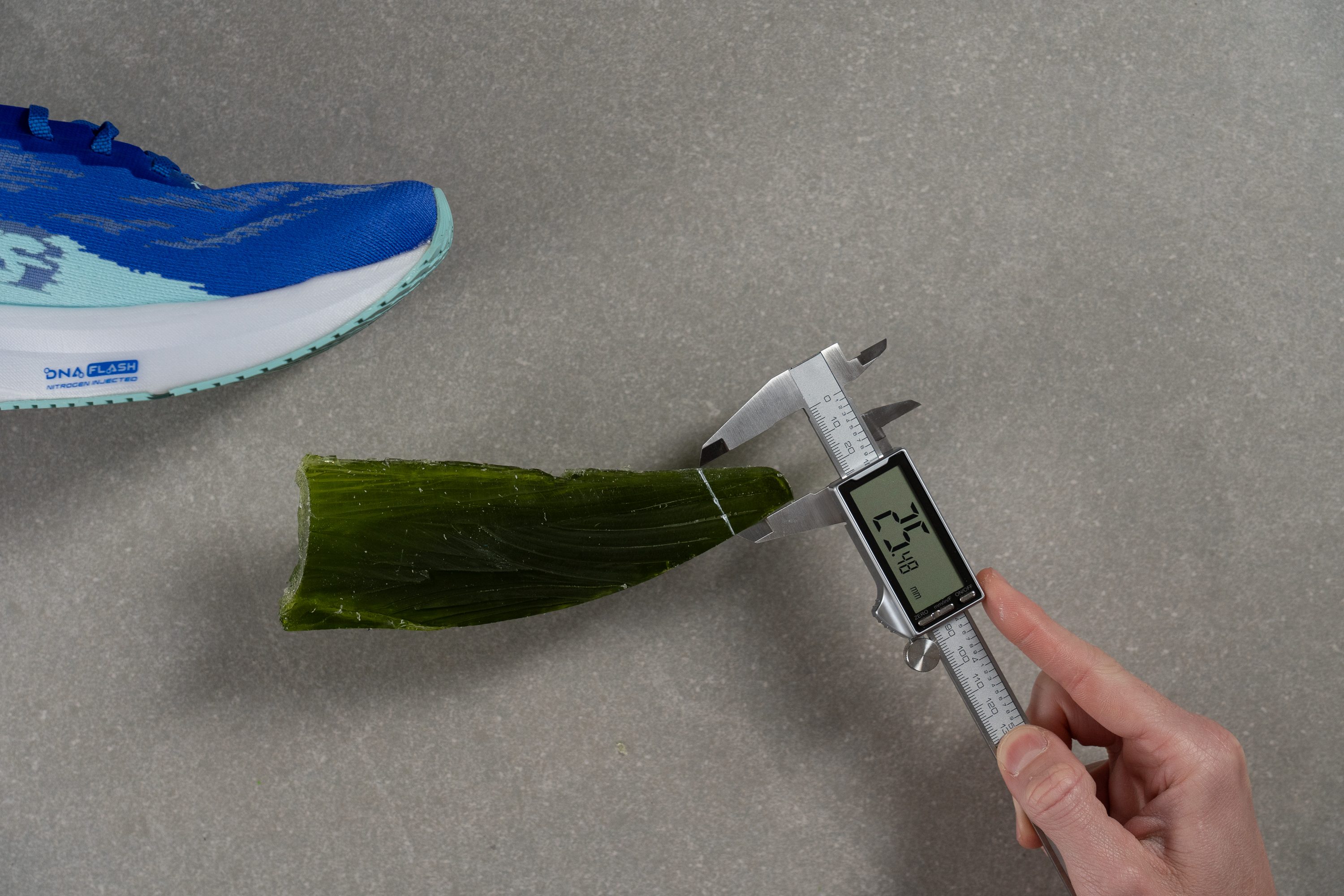
| Launch 11 | 25.5 mm |
| Average | 27.1 mm |
Traction / Grip
Traction test
While the Launch 10 was a miss in terms of grip on wet roads, the 11th edition comes back stronger and offers a more confidence-inspiring experience.
Testing the shoe's gripping capacity under a 500N force on a 7-degree wedge, we recorded a solid friction score of 0.51. That's a great result for a road running shoe making the shoe capable of both dry and wet surfaces.
| Launch 11 | 0.51 |
| Average | 0.47 |
Outsole design
The outsole design has changed entirely from v10, now showing fewer cutouts in the forefoot. That definitely explains the reduced flexibility, but offers improved heel coverage that benefits durability for rearfoot strikers. And better grip, too!
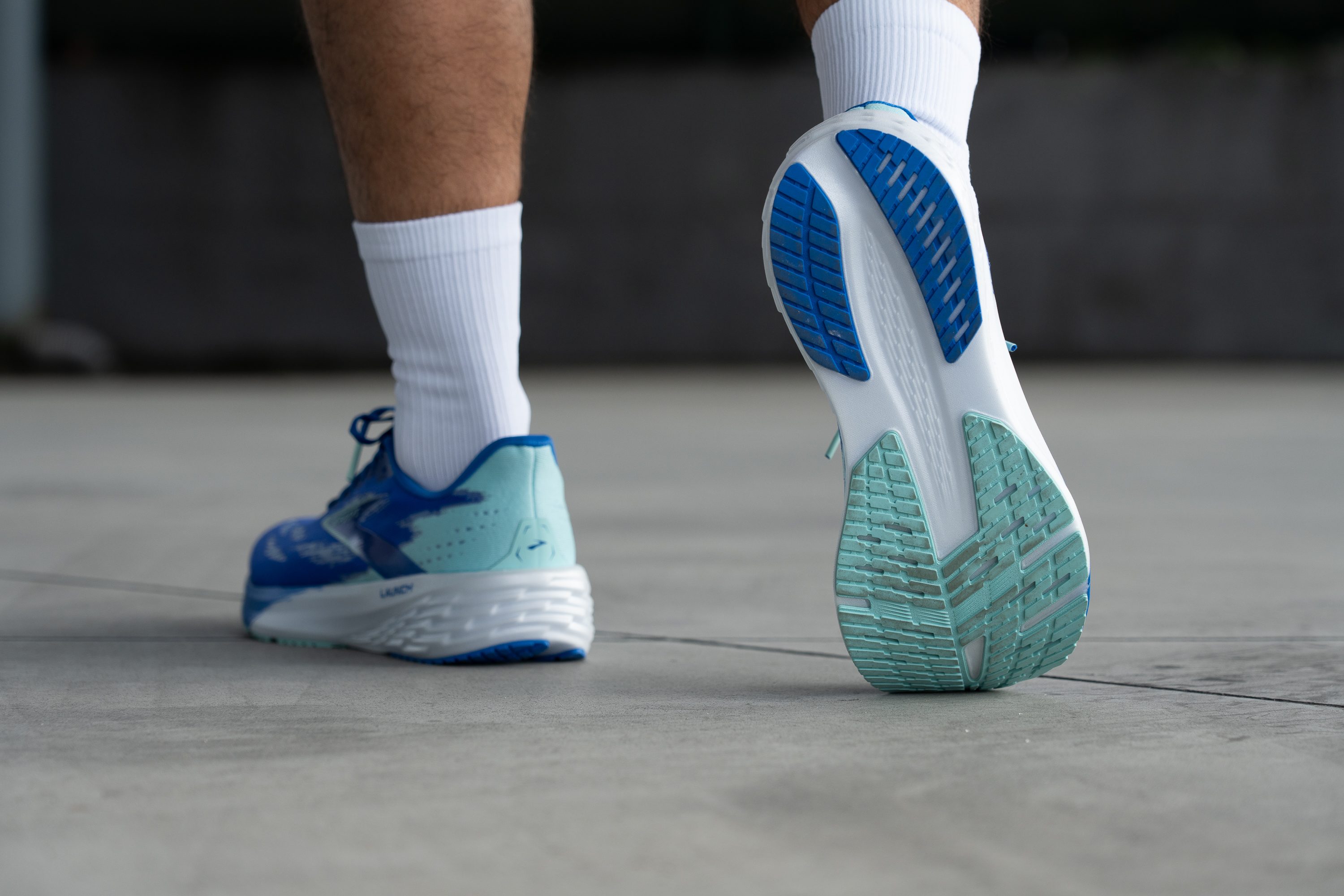
Flexibility / Stiffness
The Launch 11 didn’t just get stiffer in our torsional test, but it also confirmed that in our longitudinal test. And while 14.9N is far from concerning and even below average, it’s still a jump from the 13.3N of version 10.
This boost in stiffness makes your feet work less, delivering a more snappy ride especially at faster paces. However, it also makes the shoe a tiny bit less interesting for everyday use or for those focused on foot-strengthening workouts.
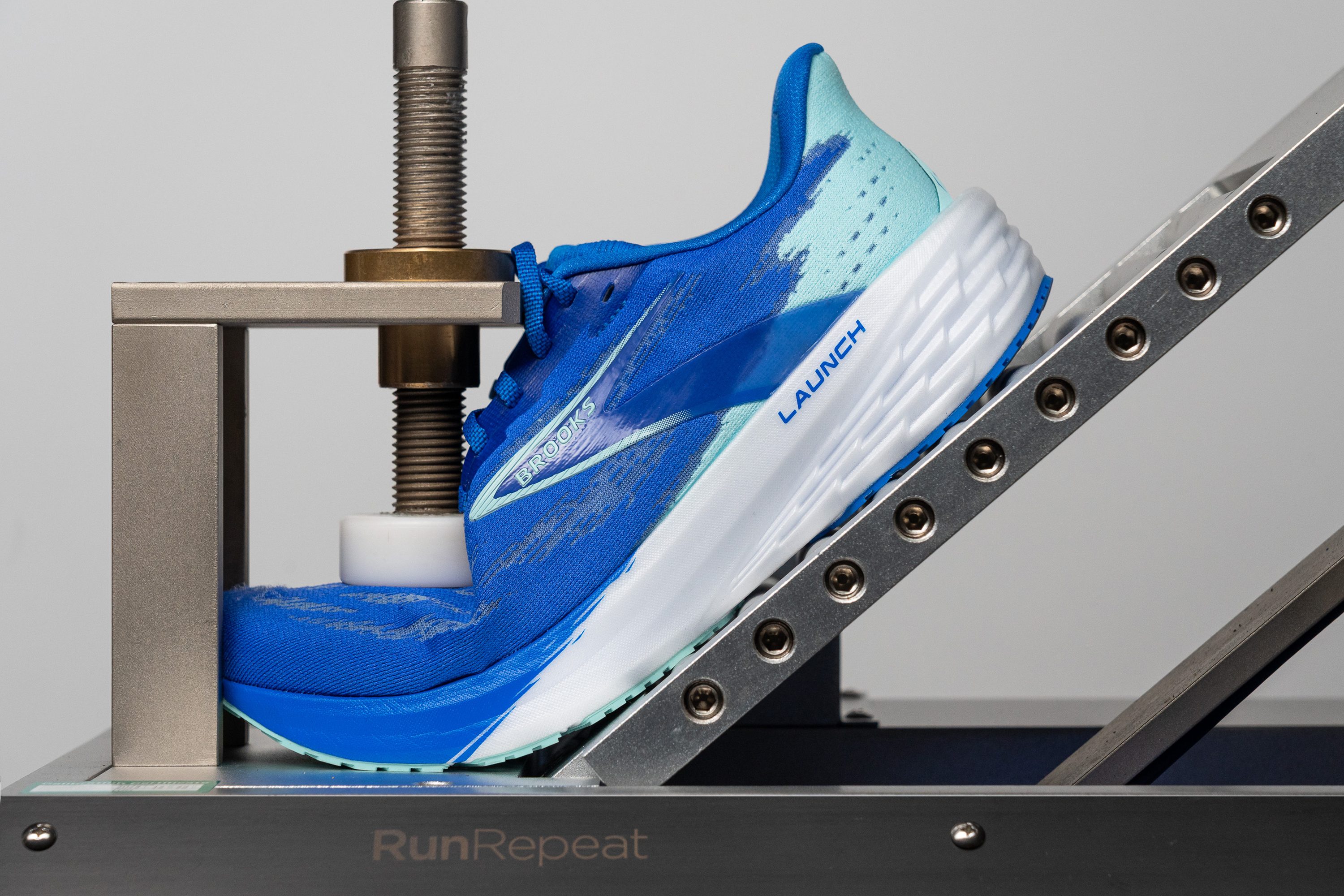
| Launch 11 | 14.9N |
| Average | 15.2N |
Weight
The Launch 11 tipped our scale at 8.35 oz or 237g, which still lands it in the lightweight category for daily trainers—but once again, there’s a minor caveat that can’t be ignored.
Last year’s version came in a few grams lighter, and we really believe that Brooks should lean harder into that strength (instead of pushing the weight up!) as it’s a core part of the Launch identity in the market.
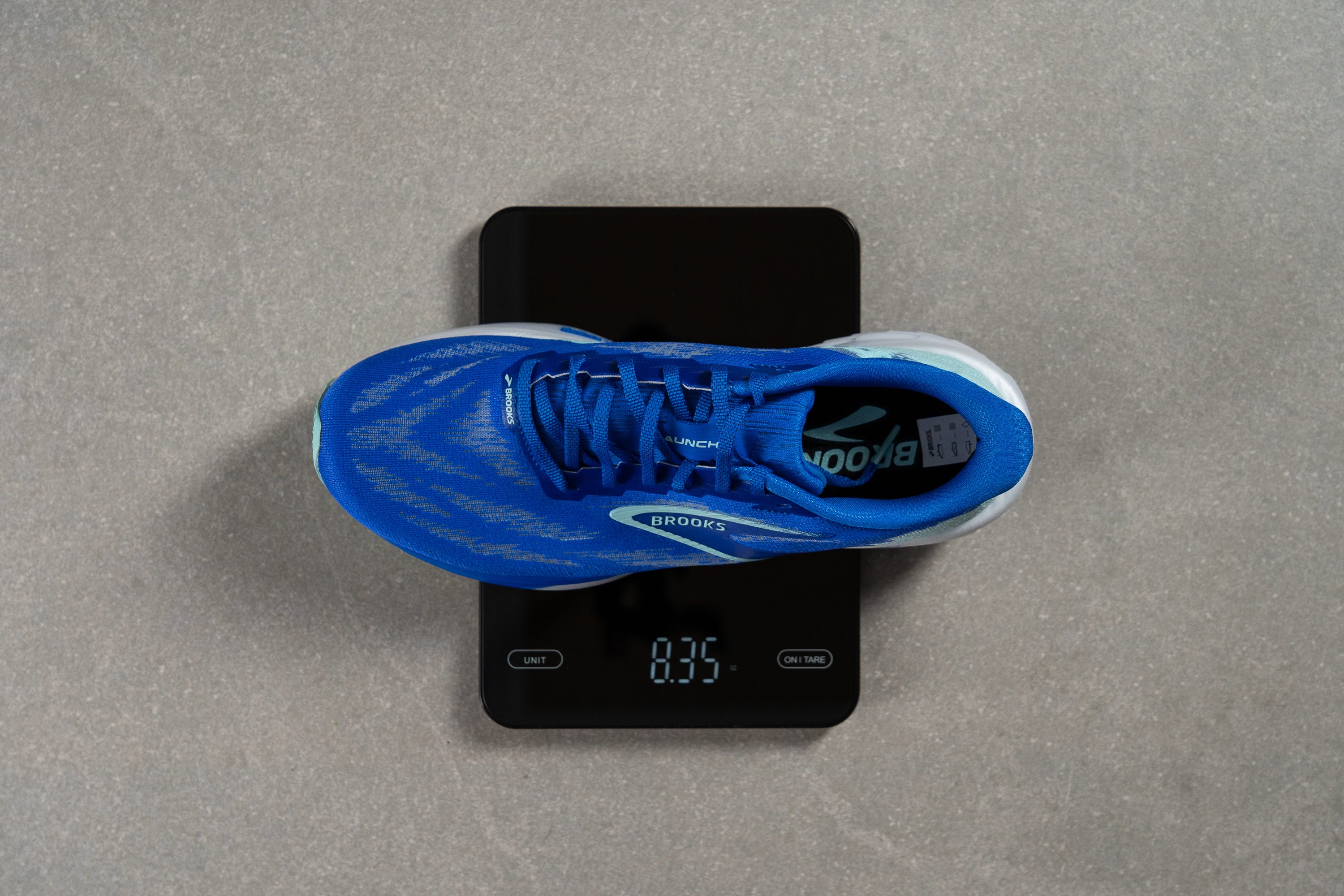
| Launch 11 | 8.4 oz (237g) |
| Average | 9.3 oz (265g) |
Breathability
An area where we hoped to see a clear step forward from v10 was breathability—and to our relief, Brooks delivered exactly that with the Launch 11’s upgraded upper.
We plugged in our smoke-pumping machine and saw airflow escape effortlessly through the upper. Based on this, we rated the Launch 11 a 4 out of 5, which makes it a smart pick for year-round use, especially in warmer climates.
The upper itself feels like a meaningful upgrade from earlier versions. Brooks used a dual-density mesh that combines light-and-airy ventilation zones with more structured support in the midfoot and rearfoot for extra stability during tempo efforts.
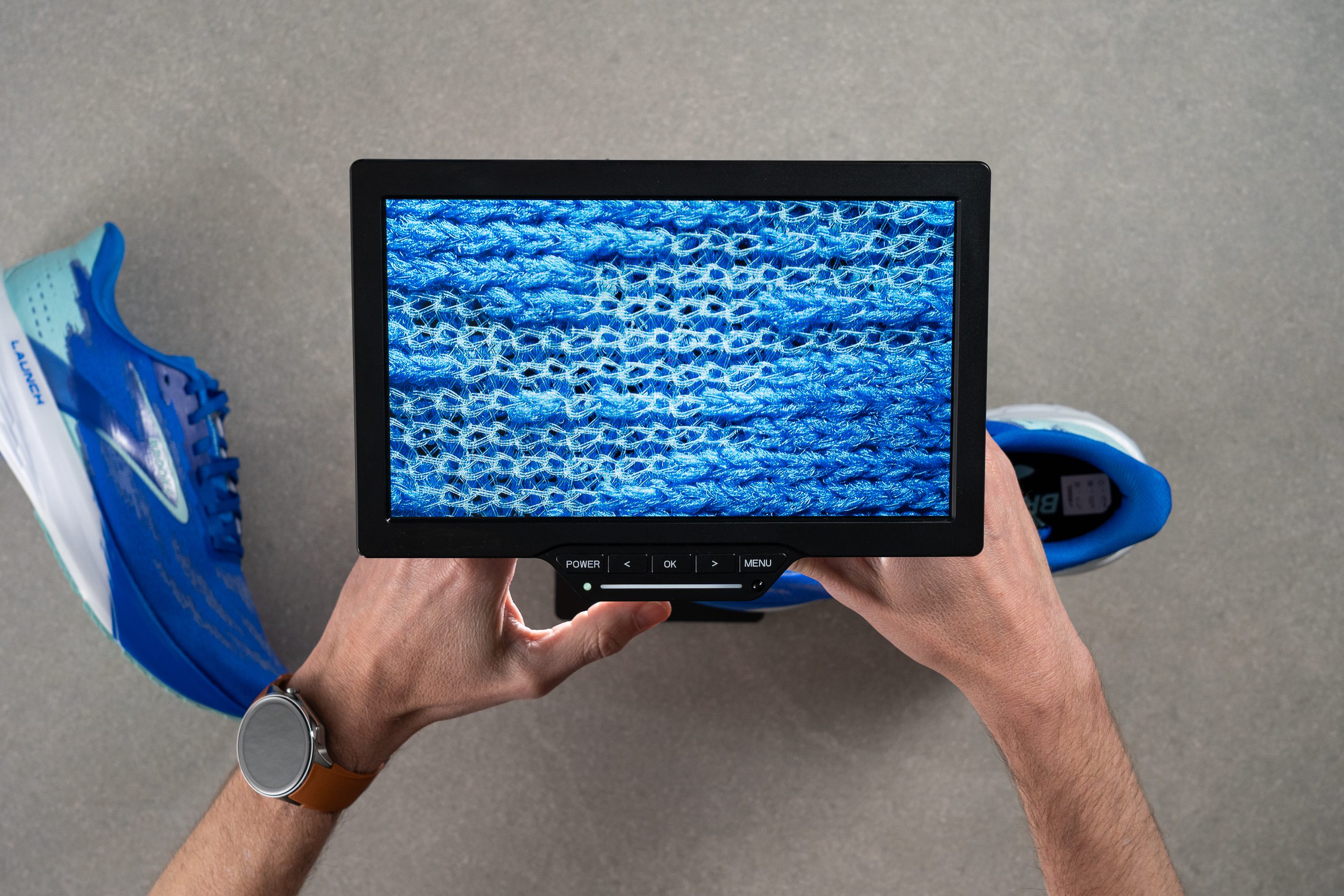
We placed the shoe under our microscope to confirm what we had seen during light testing.
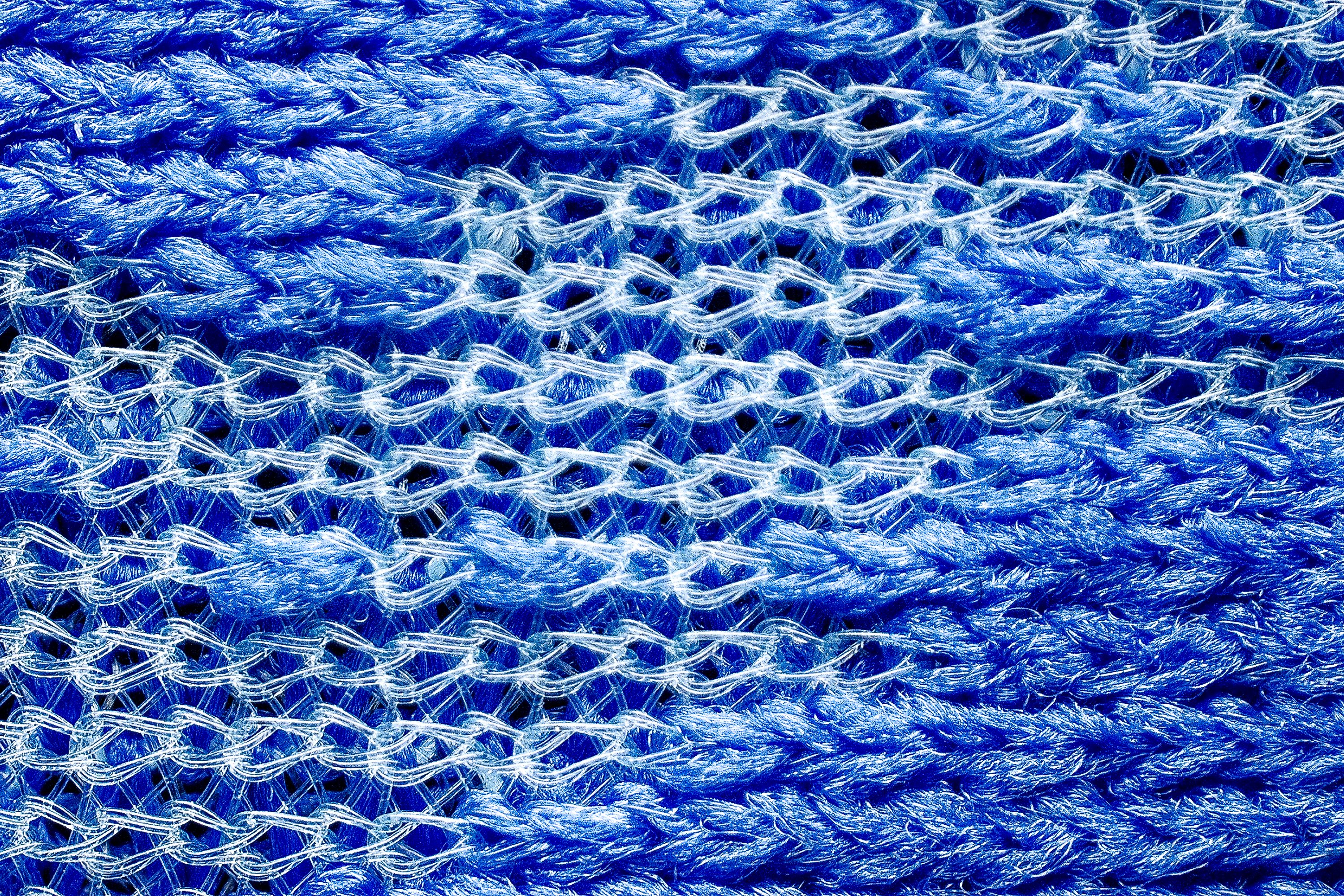
Sure enough, the mesh reveals an advanced design, helping the shoe expel warm air efficiently during runs.
Finally, we ran our hands over the entire upper to assess padding quality. We discovered that the heel is ultra-cushioned, giving off a comfy feel. Meanwhile, the tongue has a racer-inspired build—thinner and more stripped-down. That makes sense for a hybrid daily-and-speed trainer like the Launch.
| Launch 11 | 4 |
| Average | 3.7 |
Stability
Lateral stability test
Designed to be a nimble, quick-turnover shoe, stability has never been the main focus of the Launch 11—nor should anyone expect a super-stable ride from this neutral trainer. It’s not built for that purpose, but rather to deliver a fun-and-fast daily running experience.
That said, it felt slightly more stable than the v10, so let’s break down why.
Torsional rigidity
One of the key reasons is that torsional rigidity increased from 3 to 4 on our scale. While this isn’t overly concerning, it might raise some eyebrows among runners looking for a more natural-feeling ride.
| Launch 11 | 4 |
| Average | 3.5 |
Heel counter stiffness
The heel counter followed the same path, jumping from 3 in version 10 to 4 in version 11. Again, not everyone will welcome this change—though heel strikers might appreciate the added structure and improved heel lockdown.
| Launch 11 | 4 |
| Average | 2.9 |
Midsole width - forefoot
One of the standout traits of the Brooks Launch series is its departure from the world of maximalist shoes, offering a somewhat-narrow platform that’s perfect for runners steering clear of anything overly bulky. Thankfully, that remains unchanged.
Up front, we measured 112.0 mm in the forefoot—a sweet spot for those who want the Launch to stay true to its streamlined, speed-focused DNA.
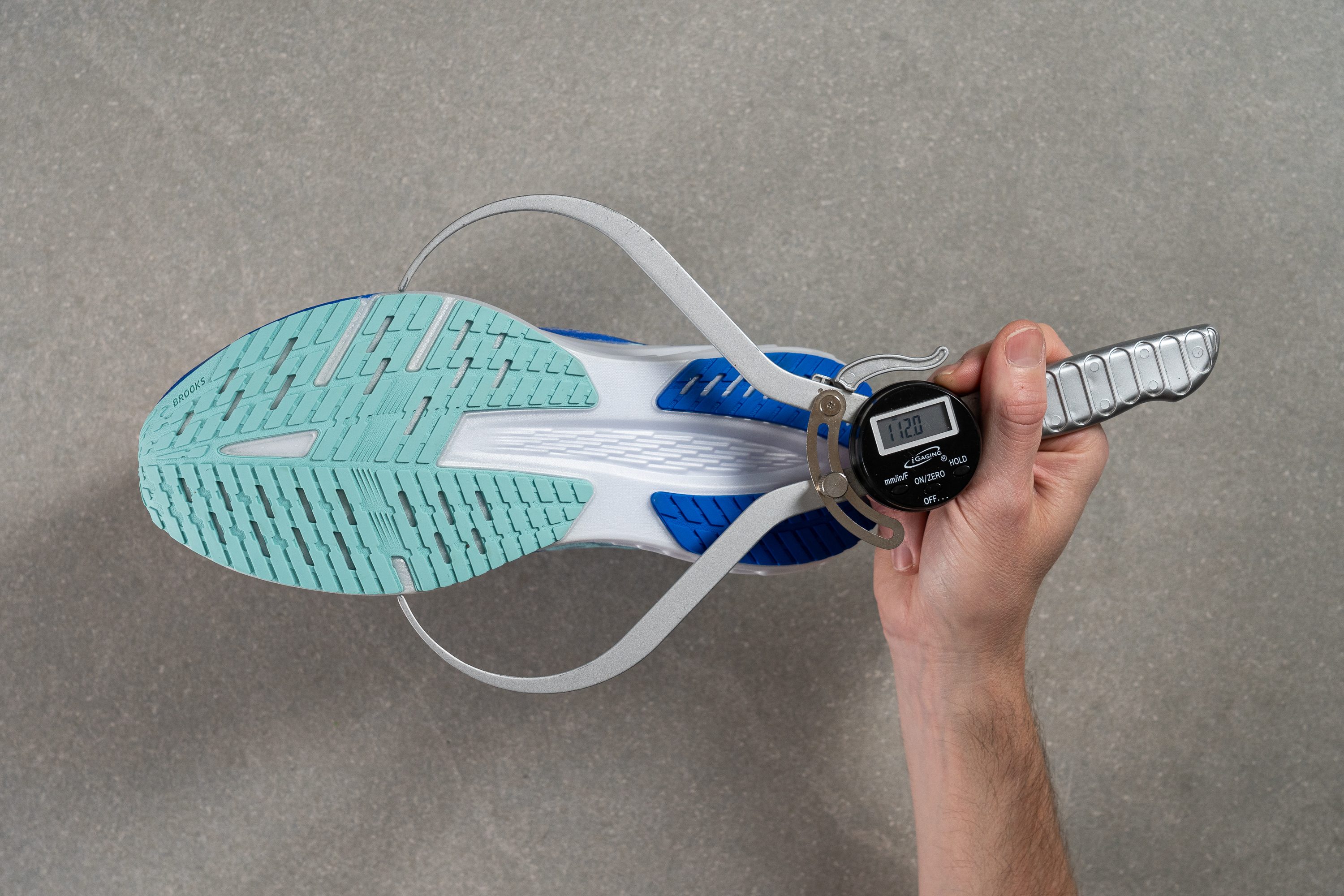
| Launch 11 | 112.0 mm |
| Average | 114.3 mm |
Midsole width - heel
In the heel, Brooks once again took a bold approach, narrowing it down to just 84.1 mm—well below average. This demands a clean, neutral landing from any heel striker.
While some might see this as a drawback, it actually makes the Launch 11 feel incredibly lively. And for us, that fun factor still matters a lot.
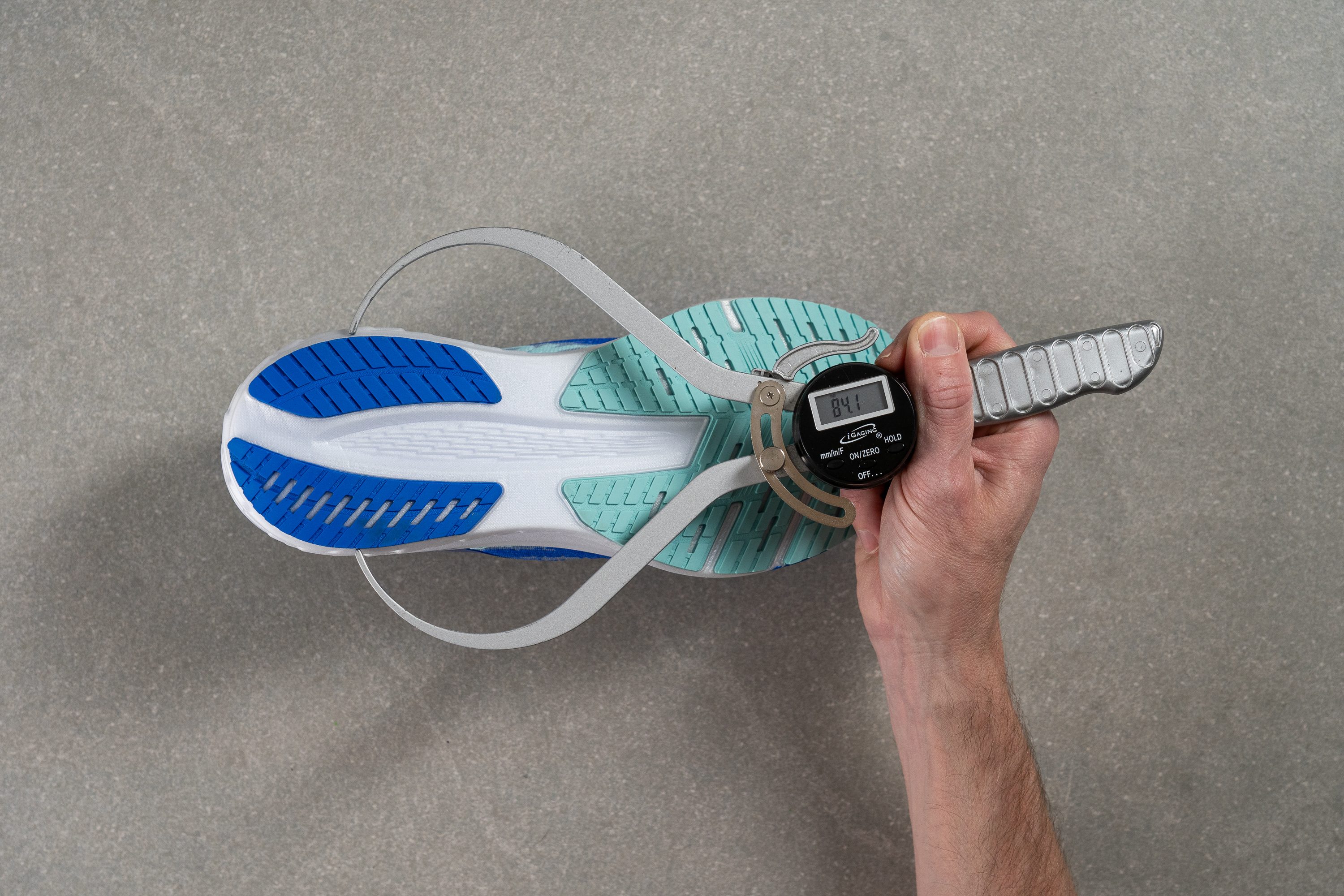
| Launch 11 | 84.1 mm |
| Average | 90.7 mm |
Durability
Toebox durability
One concern with this type of variable-density upper is its potential to compromise durability. However, despite our early skepticism, we tested the Launch 11 with the Dremel and found it performed surprisingly well, as it scored a solid 3/5.
| Launch 11 | 3 |
| Average | 2.6 |
Heel padding durability
After our second Dremel test on the same spot, the Launch 11 performed really bad, earning a concerning 1/5 on our durability scale. This could be a red flag for runners who often wear holes in this area.
| Launch 11 | 1 |
| Average | 3.4 |
Outsole durability
After the Dremel worked hard to wear down the rubber, we found only a minimal 0.8 mm dent. This result is good, showing strong wear resistance and promising a long-lasting, durable shelf life for the Launch 11.
| Launch 11 | 0.8 mm |
| Average | 1.1 mm |
Outsole thickness
The outsole got slightly thinner, dropping from 3.4 mm to 3.0 mm. We think this is a smart update—it offers a less filtered ride, and that thickness is still plenty based on earlier durability tests.
However, we believe that it’s likely Brooks trimmed it out of necessity, given the weight increase we recorded during our lab review.
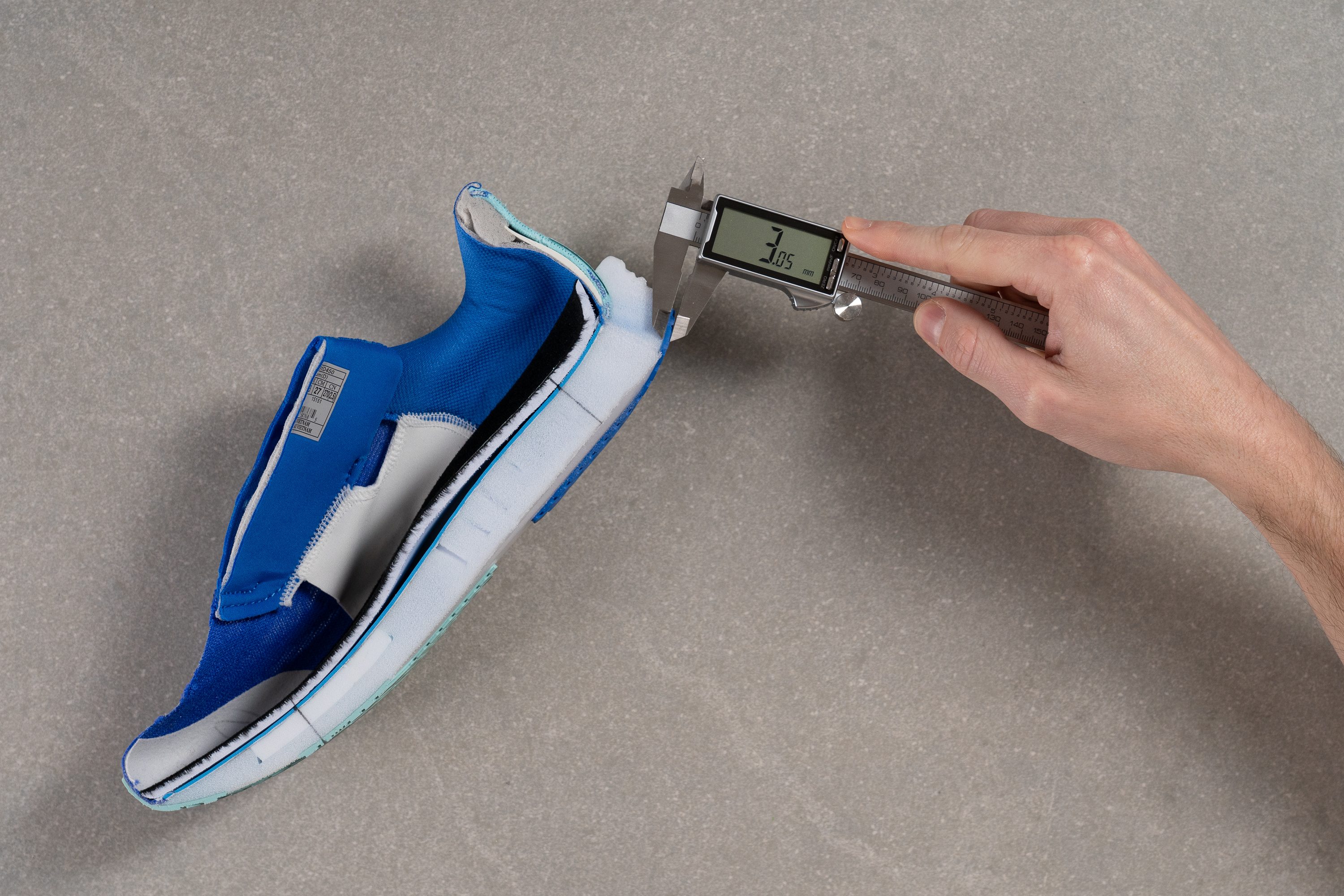
| Launch 11 | 3.0 mm |
| Average | 3.2 mm |
Misc
Insole thickness
The insole measures 5.0 mm—just slightly above average, but still thick enough to add a bit more underfoot comfort.
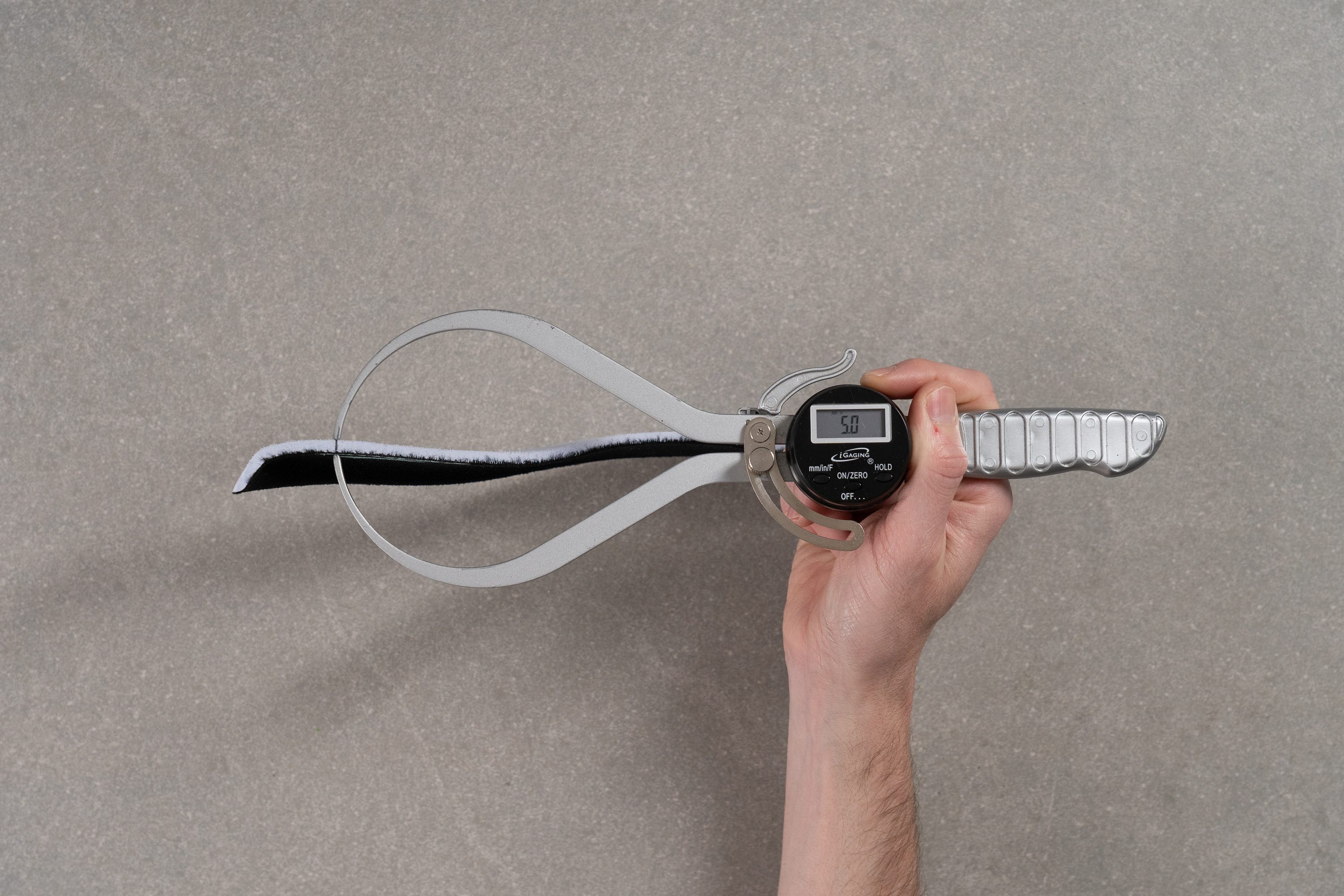
| Launch 11 | 5.0 mm |
| Average | 4.5 mm |
Removable insole
We found that the insole comes out easily, as it’s not glued to the last, making swaps quick and hassle-free.
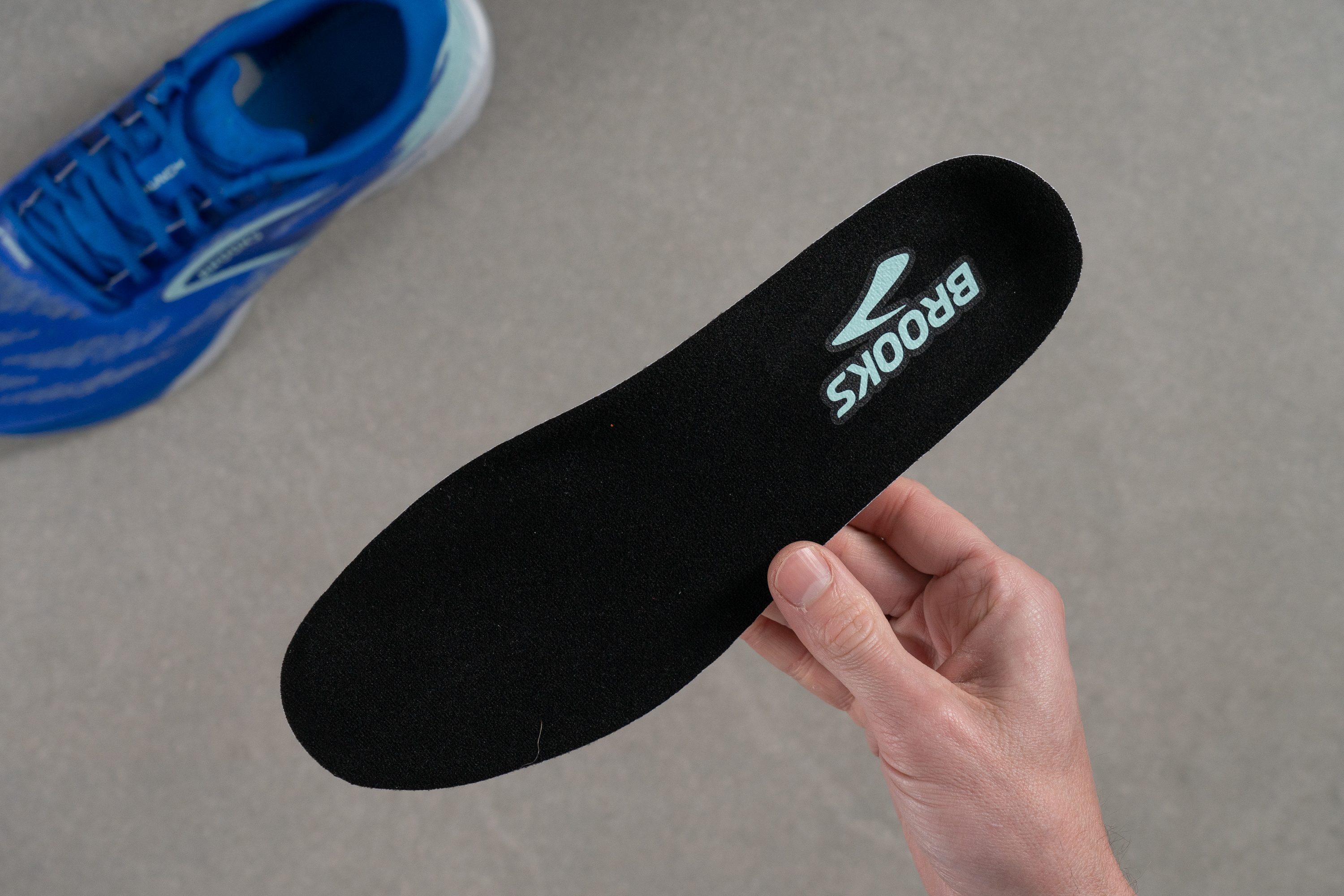
| Launch 11 | Yes |
Midsole softness in cold (%)
We placed the Launch 11 in our freezer for 20 minutes, and it only got 16% firmer—a winter-friendly result that shows its temperature resistance is better than average.
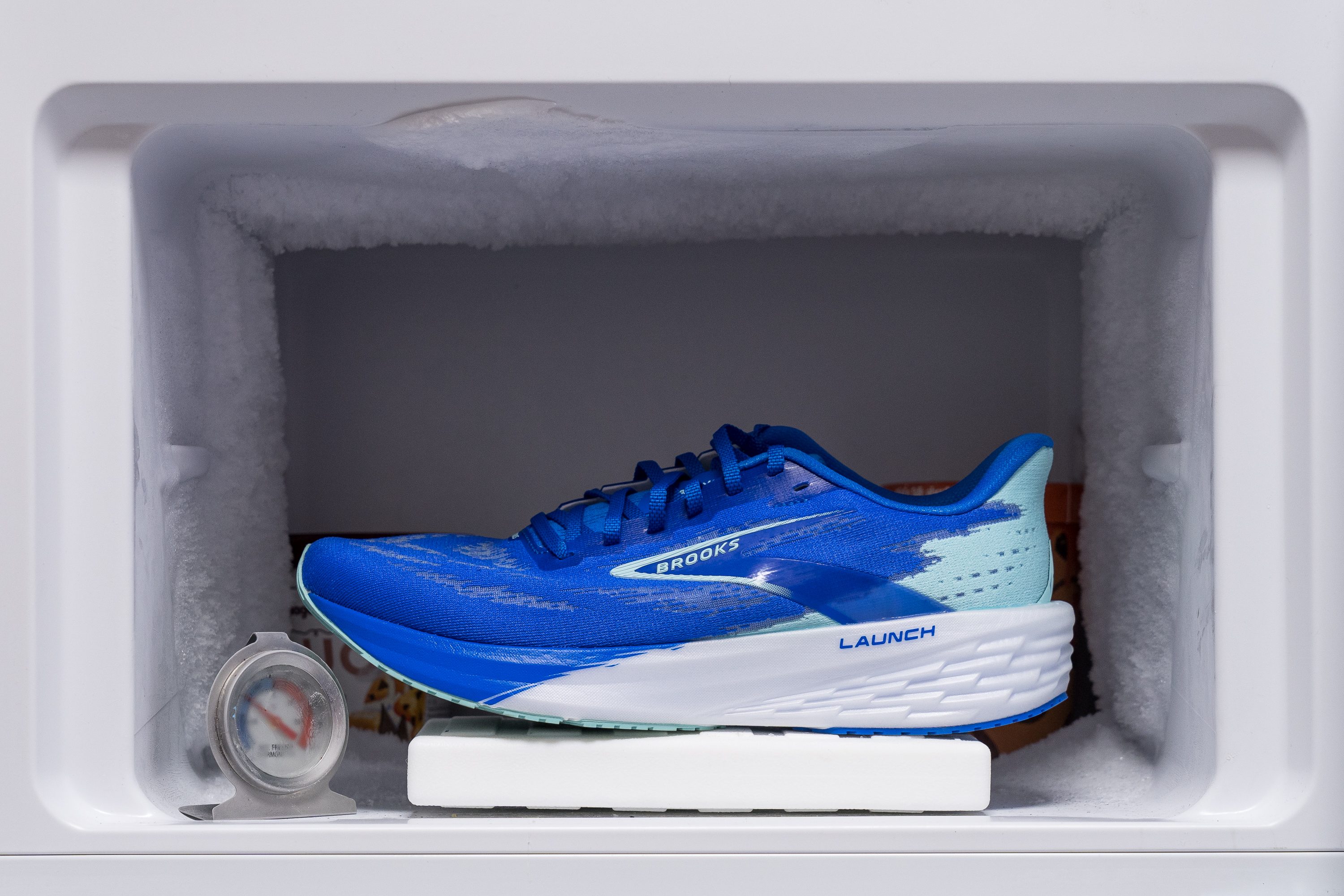
| Launch 11 | 16% |
| Average | 25% |
Reflective elements
Given the mid-tier price, we didn’t expect premium touches. So, the lack of reflective elements feels like a fair trade-off rather than a letdown.
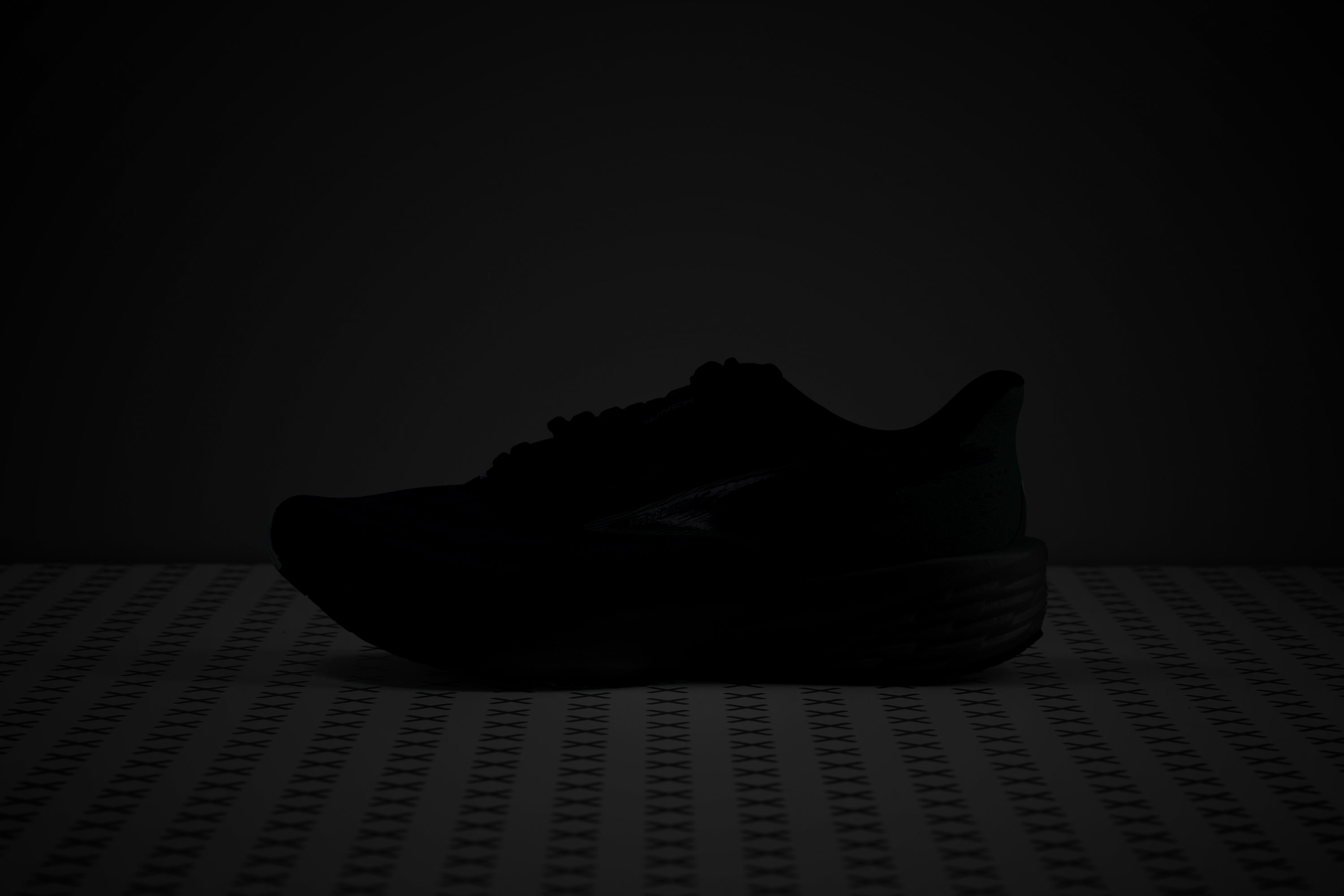
| Launch 11 | No |
Tongue padding
The lacing cage follows a clean-and-functional approach that we always appreciate. It sticks to a minimal layout with punched eyelets and includes one near the ankle, letting runners tie a runner’s knot for a more secure fit.
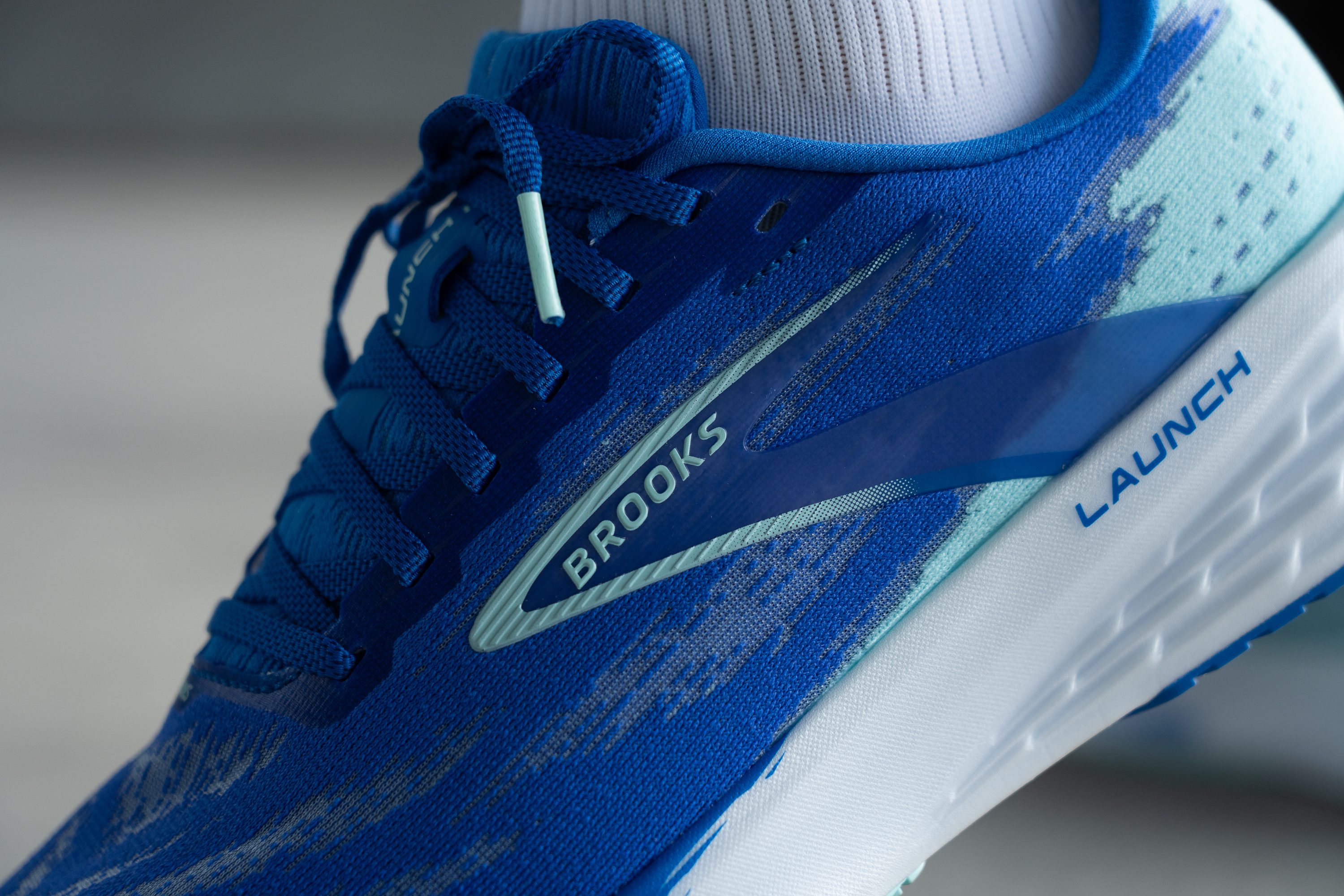
As for the tongue, we discovered that its 5.0 mm padding delivers a nice comfort-to-weight ratio. We think that going thinner could’ve made it feel underbuilt for daily training—while anything thicker might’ve worked against the Launch's versatility.
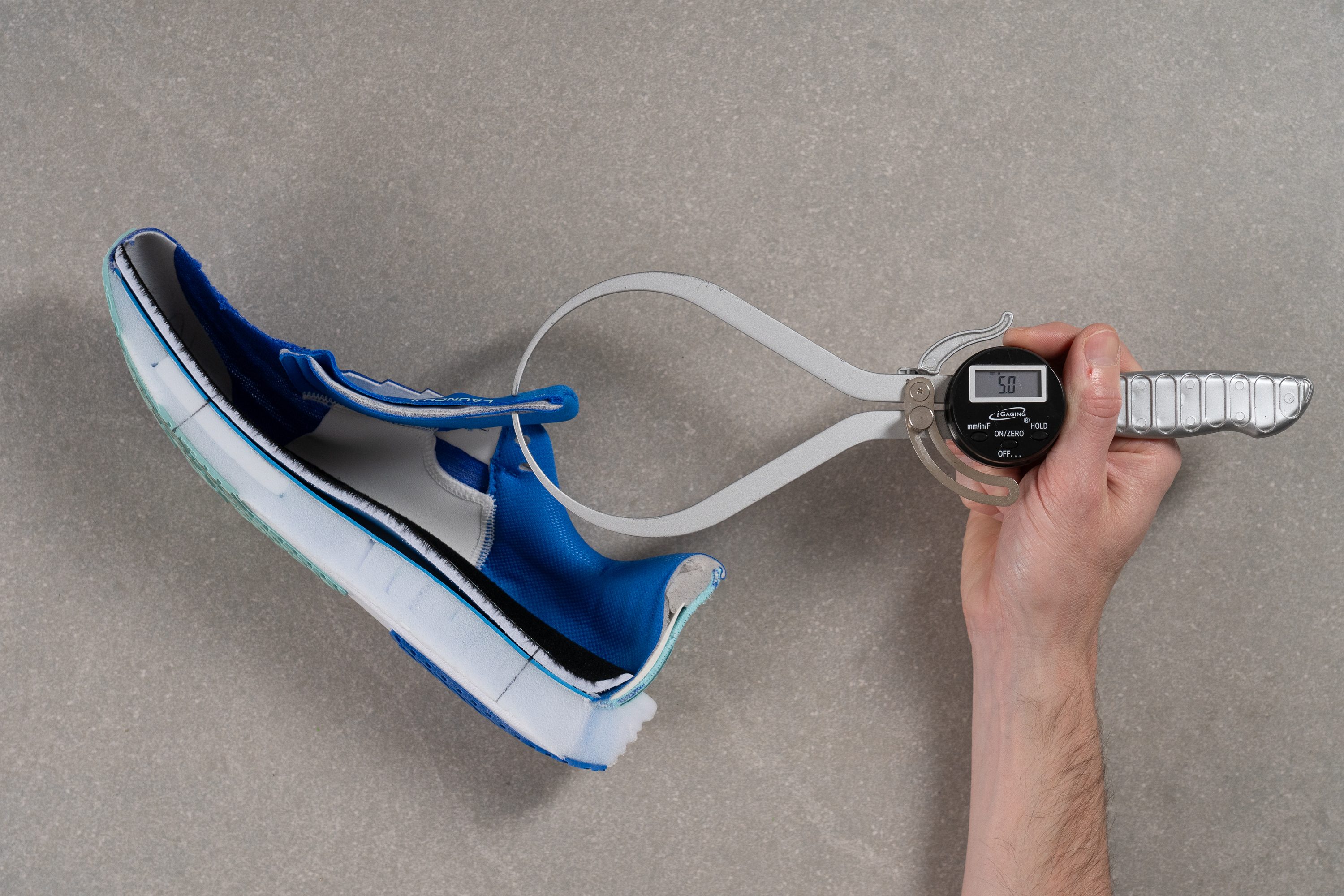
| Launch 11 | 5.0 mm |
| Average | 5.8 mm |
Tongue: gusset type
Shoes that cost more than the Launch 11 sometimes skip gusseted tongues, like we saw in both the Brooks Glycerin 22 and Brooks Glycerin GTS 22. That’s why this detail felt like a pleasant surprise!
Just like its predecessor, we discovered that the tongue of the Launch 11 is fixed to the sides, creating a better-than-average, speedwork-ready lockdown.

| Launch 11 | Both sides (semi) |
Price
The Brooks Launch 11 still offers nice value, but this year brings a surprise—an unexpected $10 price hike that longtime fans won’t appreciate. That said, newcomers to the series may still find the price reasonable.
| Launch 11 | $120 |
| Average | $152 |
Heel tab
The heel area has a basic design and, as a result, skips any kind of pull tab. However, Brooks added a fresh decorative detail near the base that didn’t appear in the Launch 10.
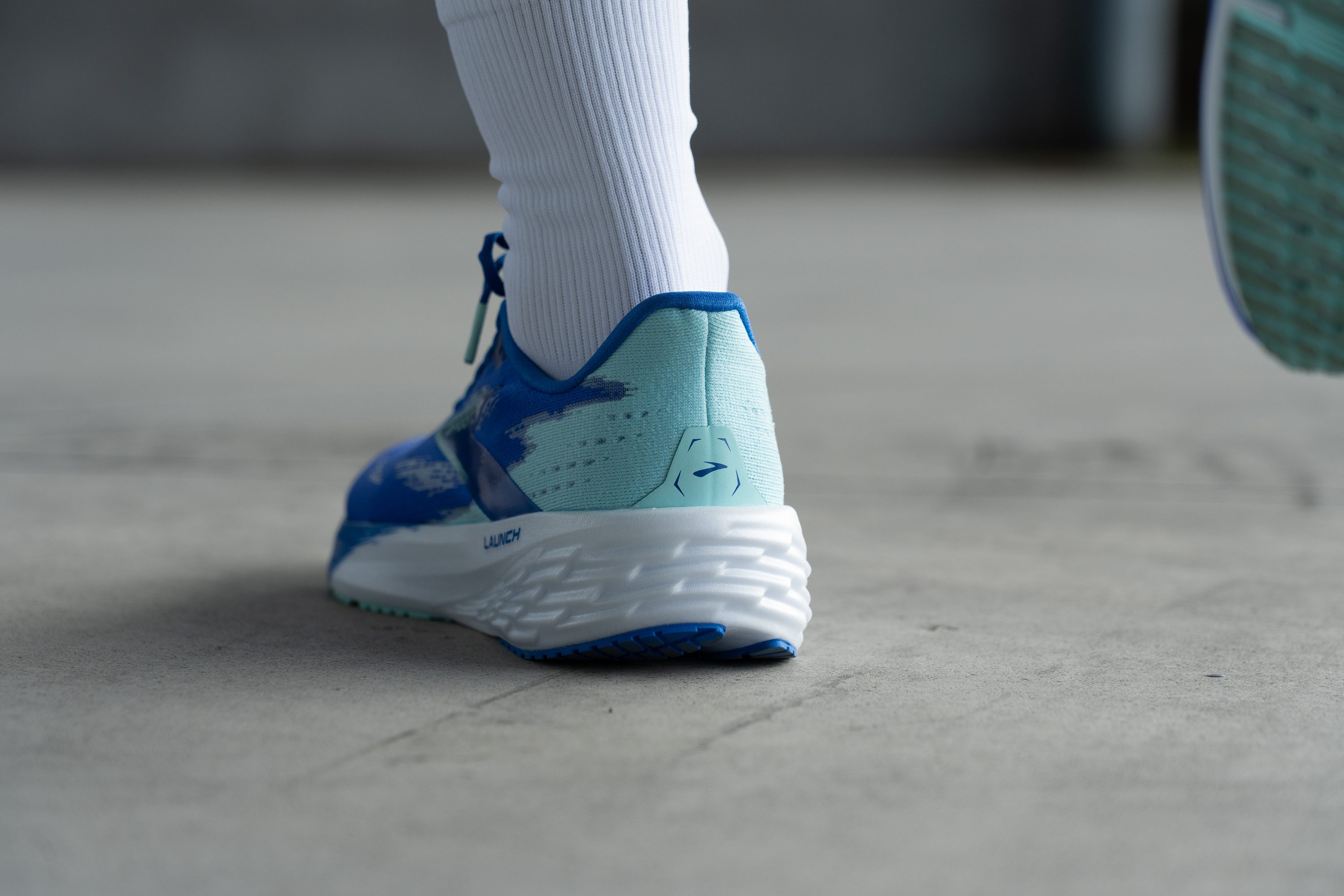
| Launch 11 | None |

